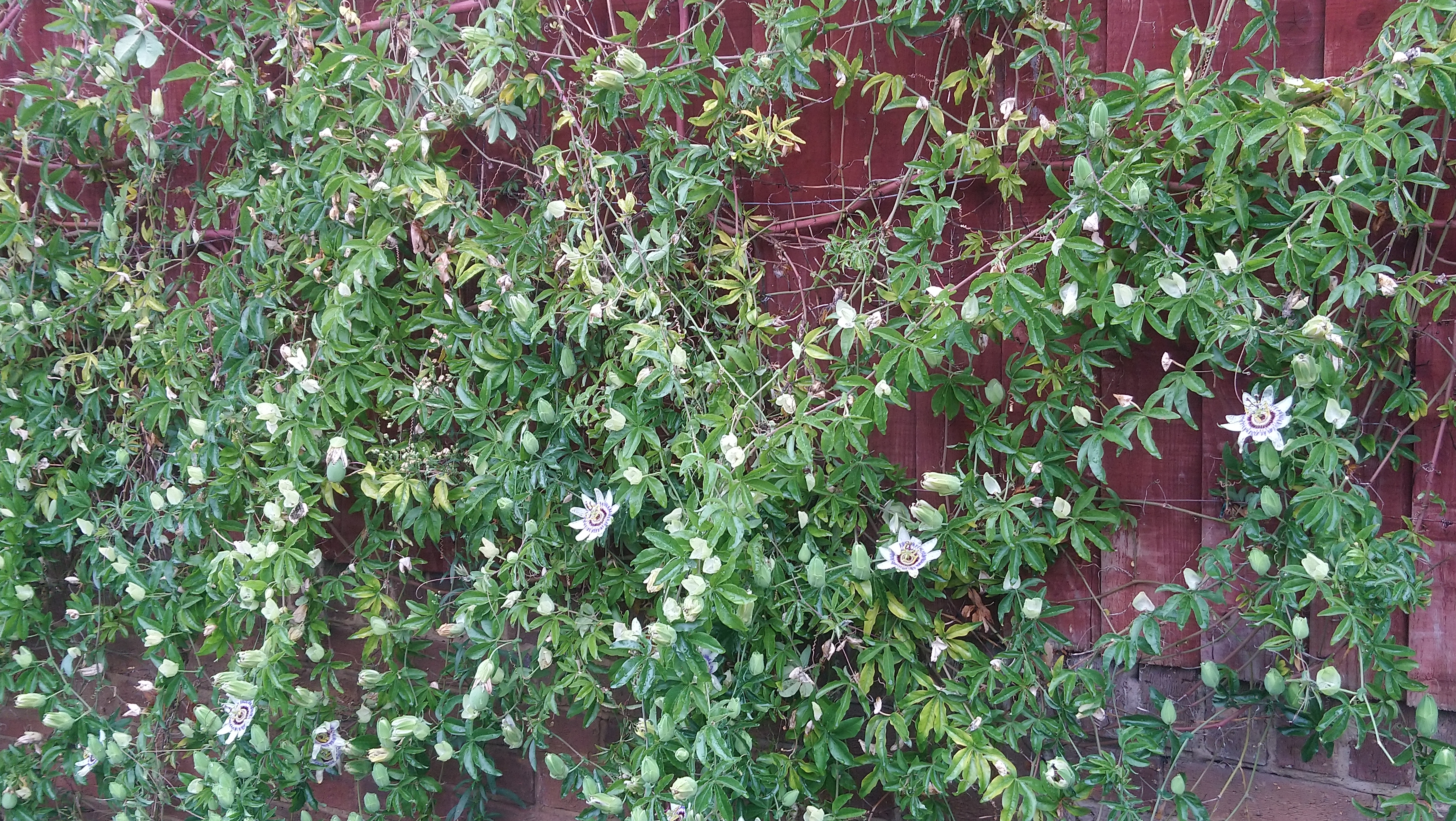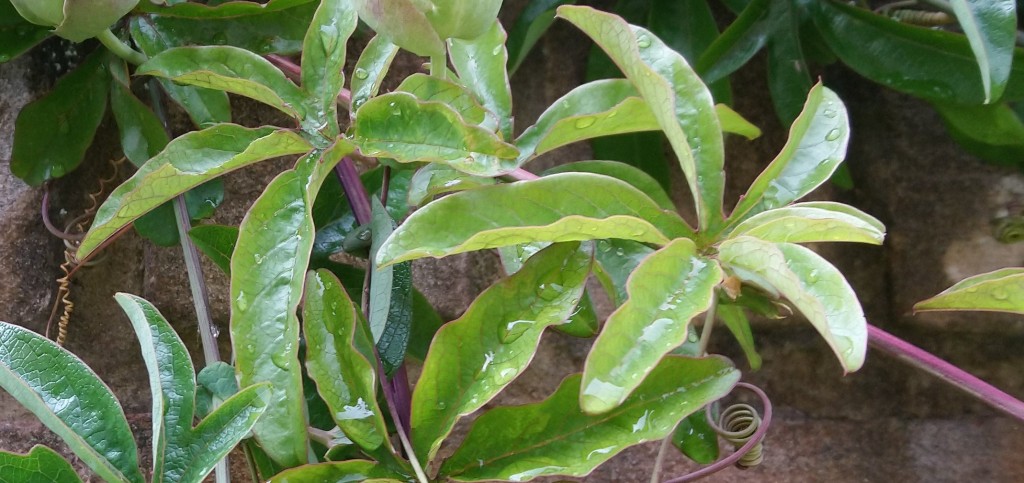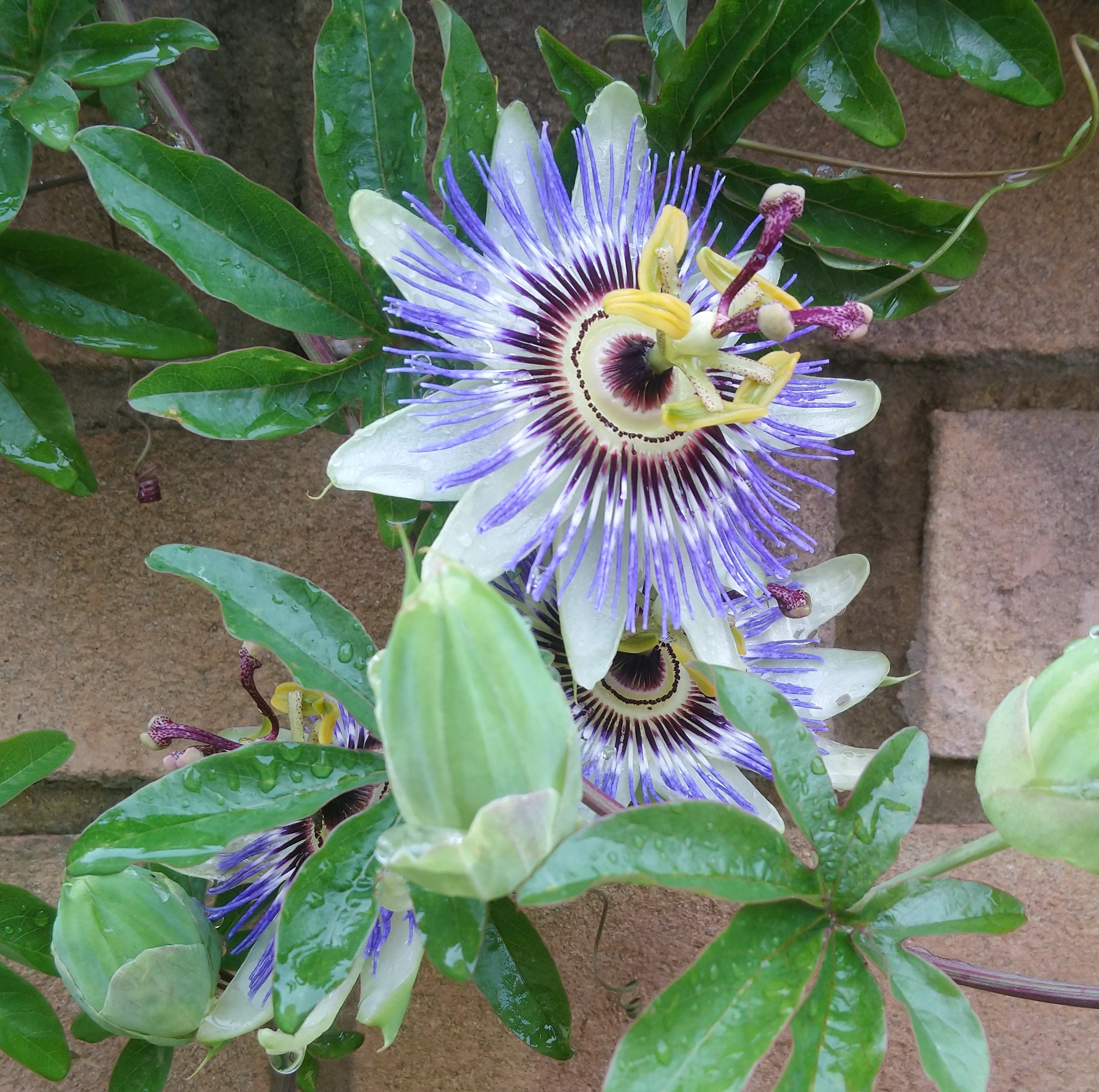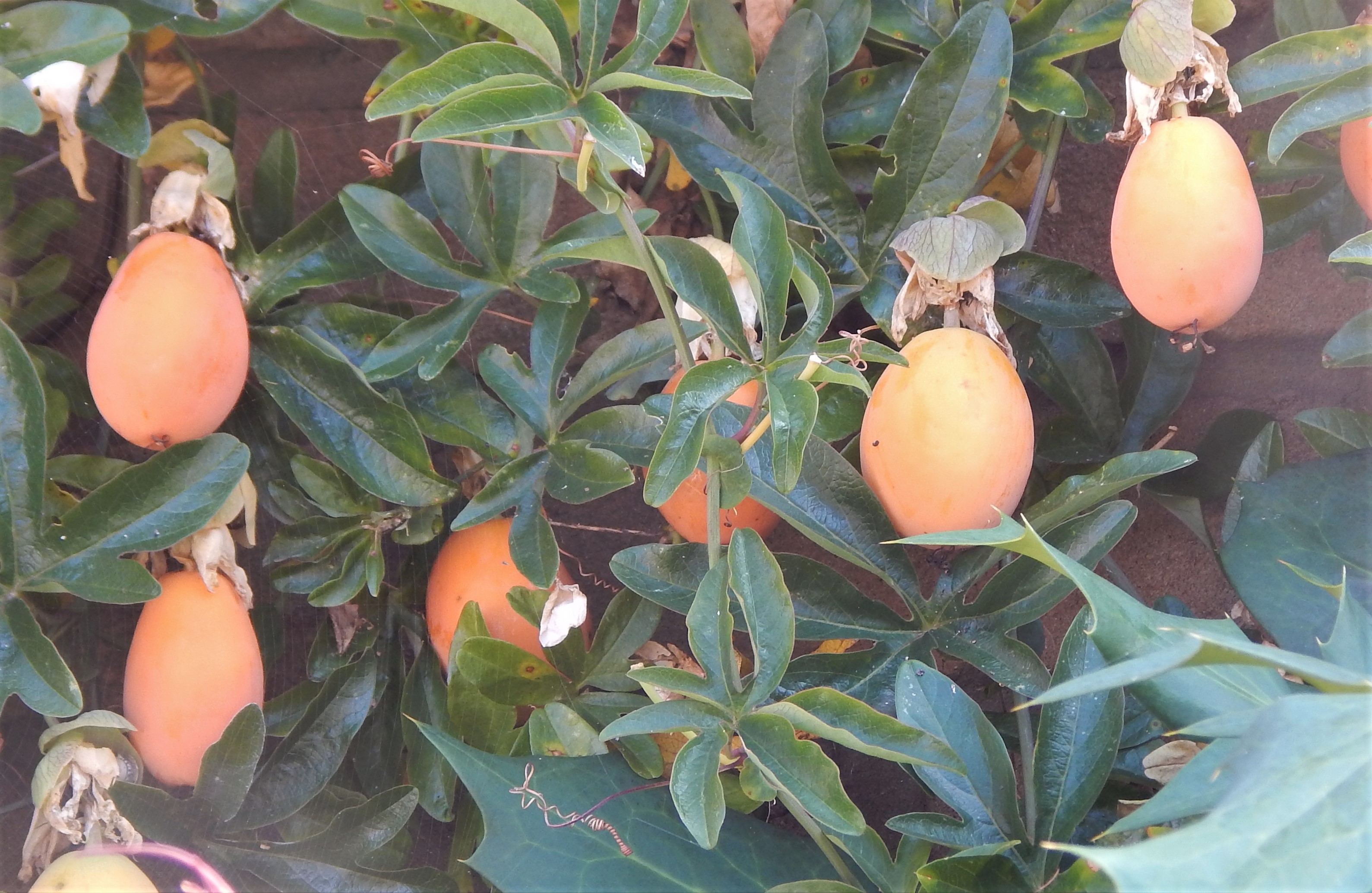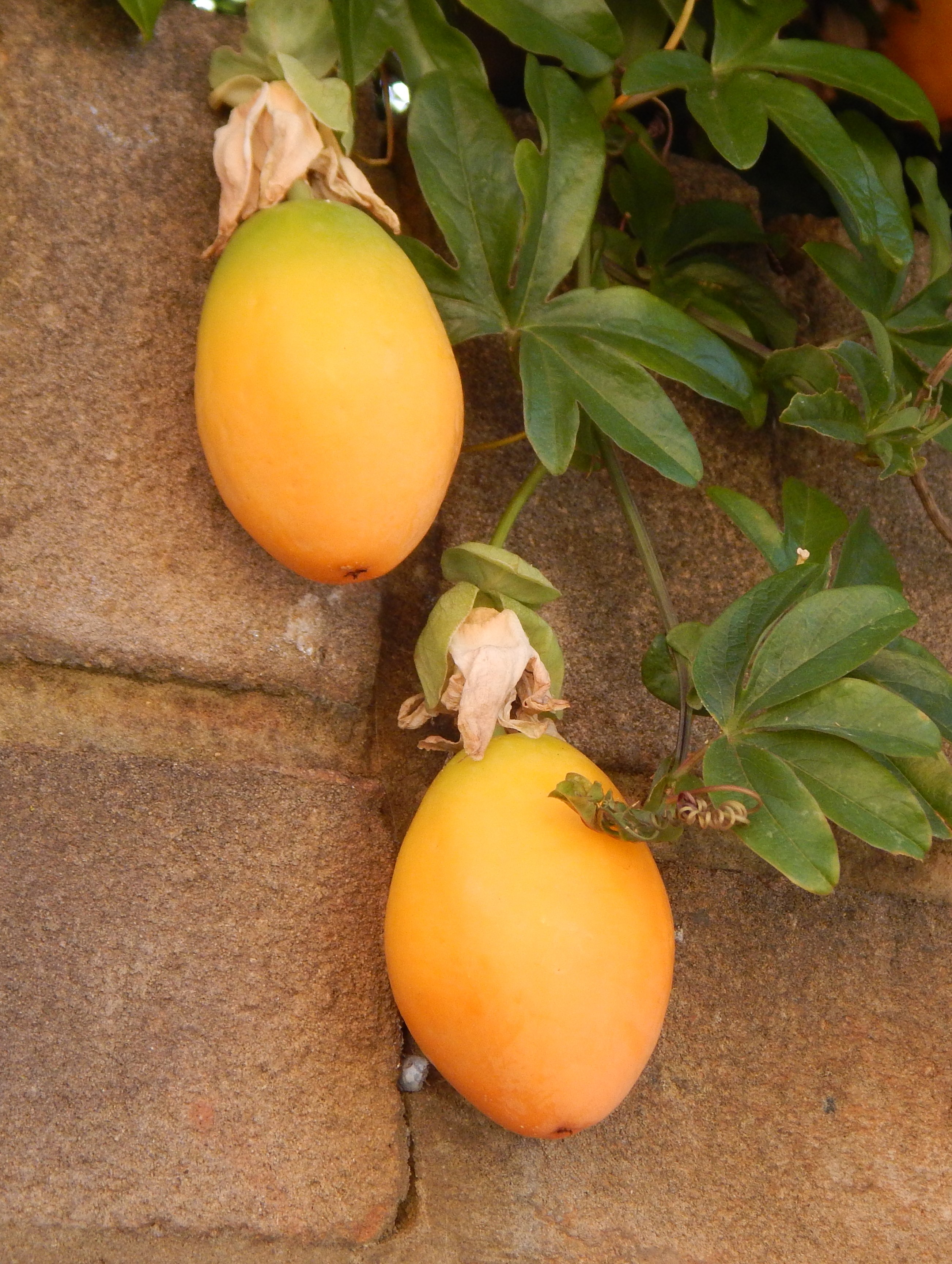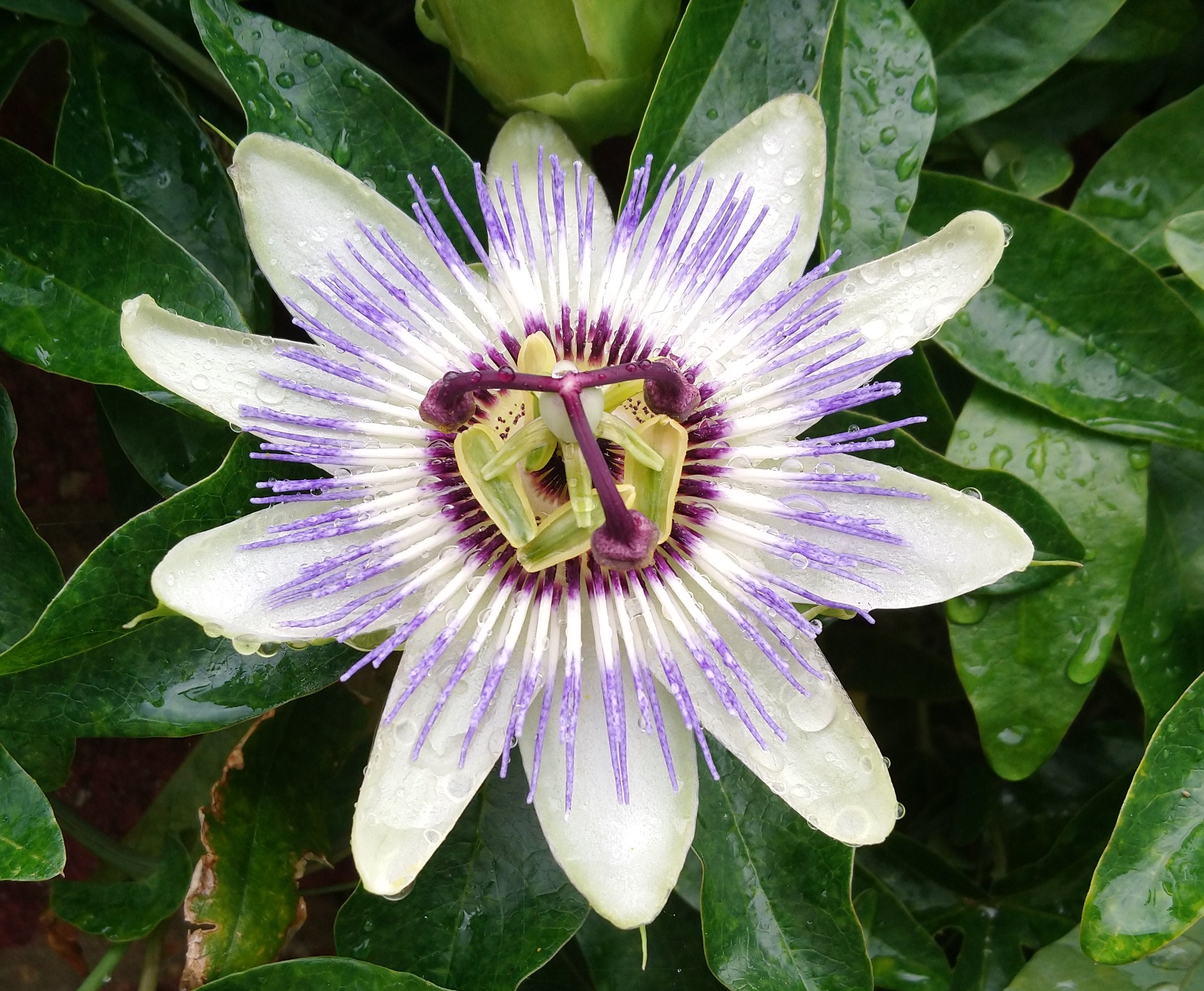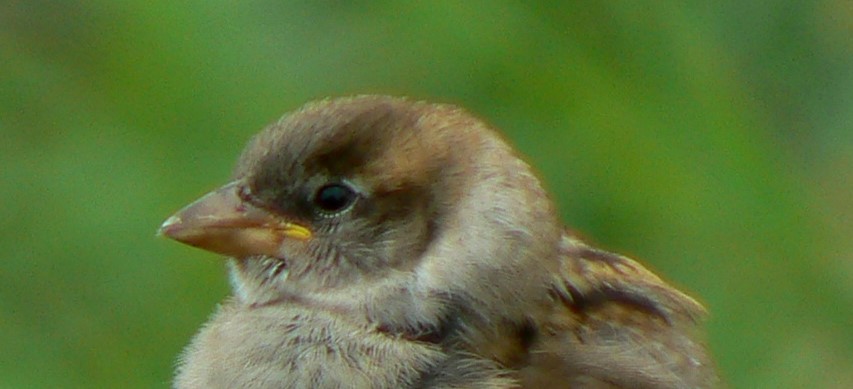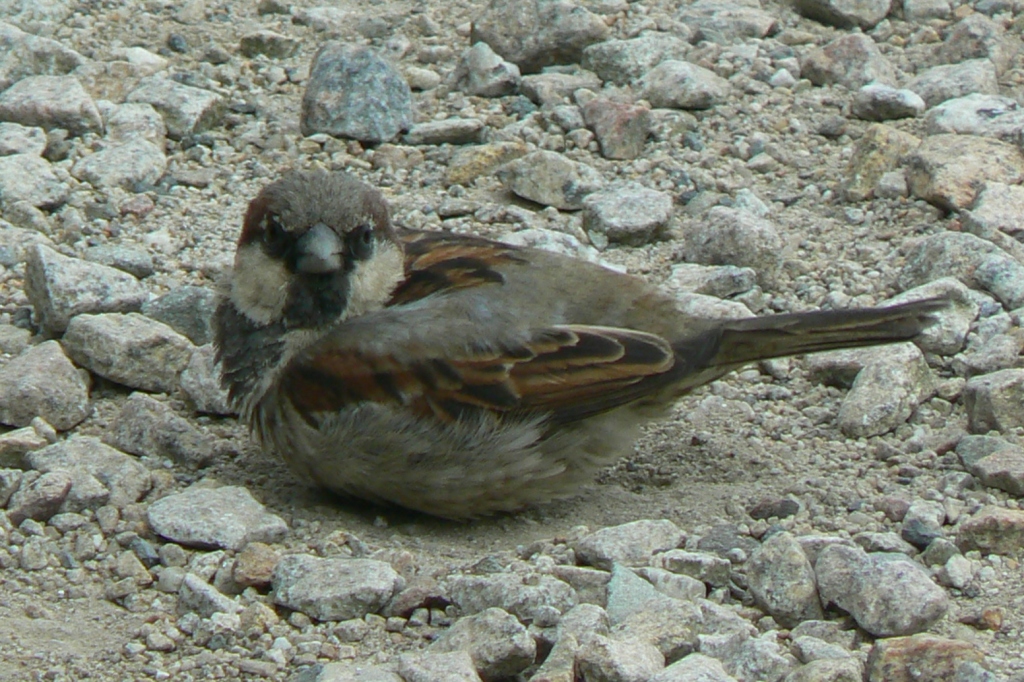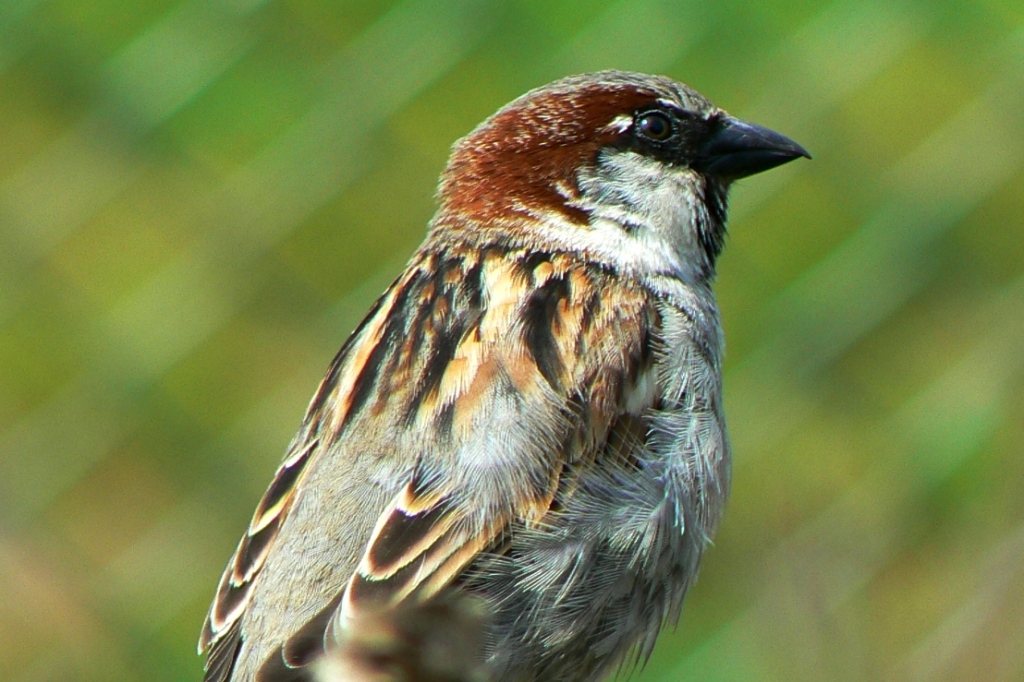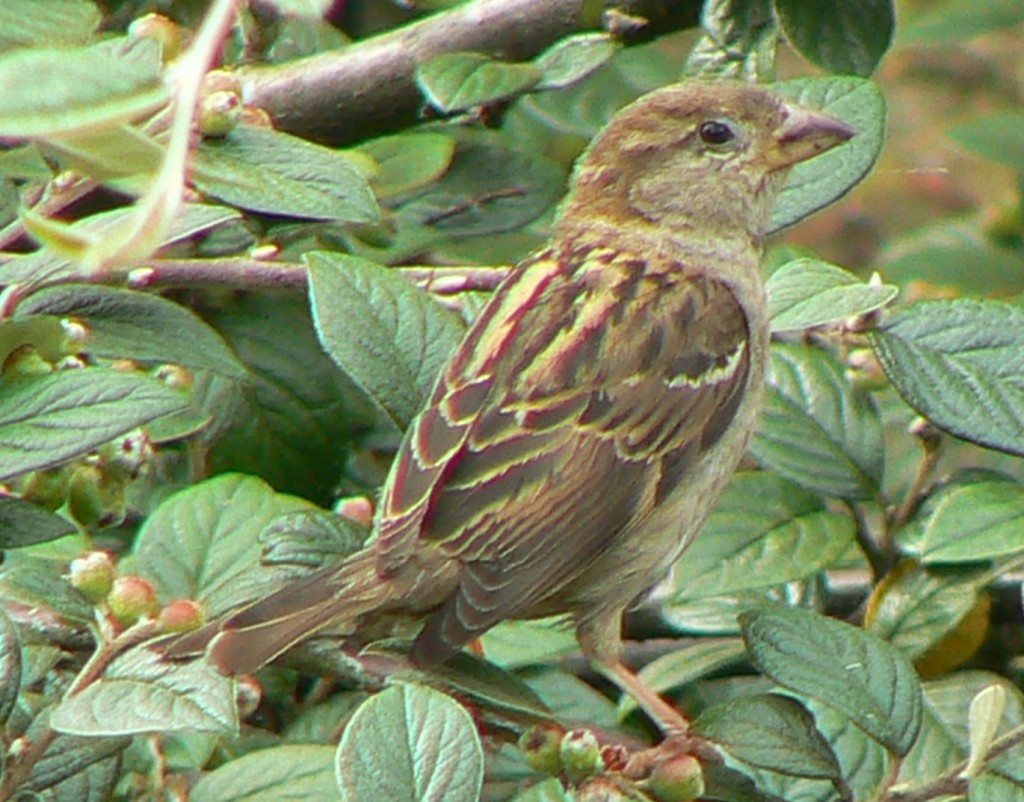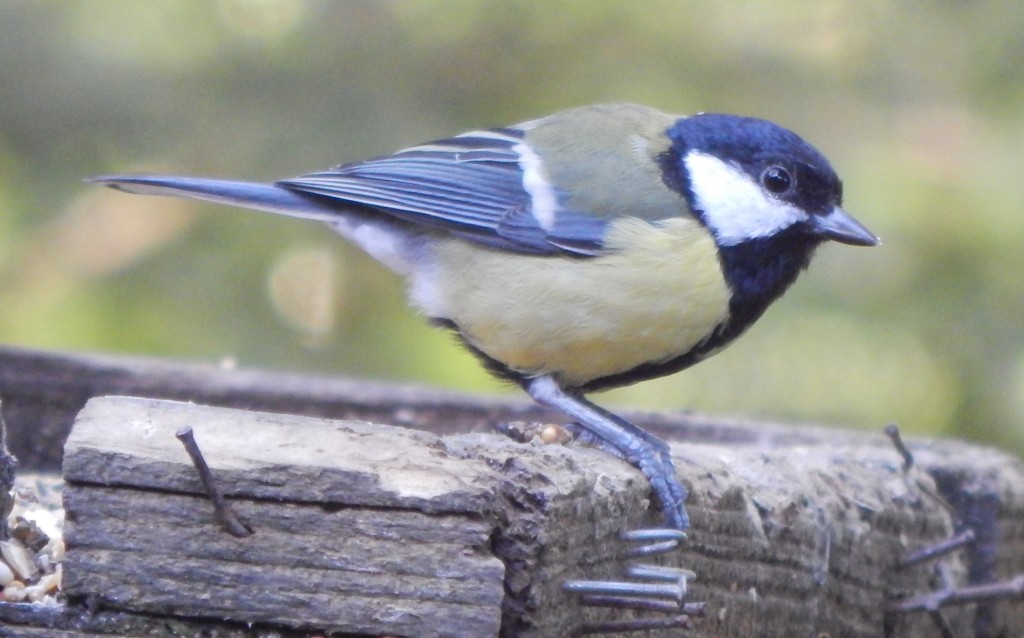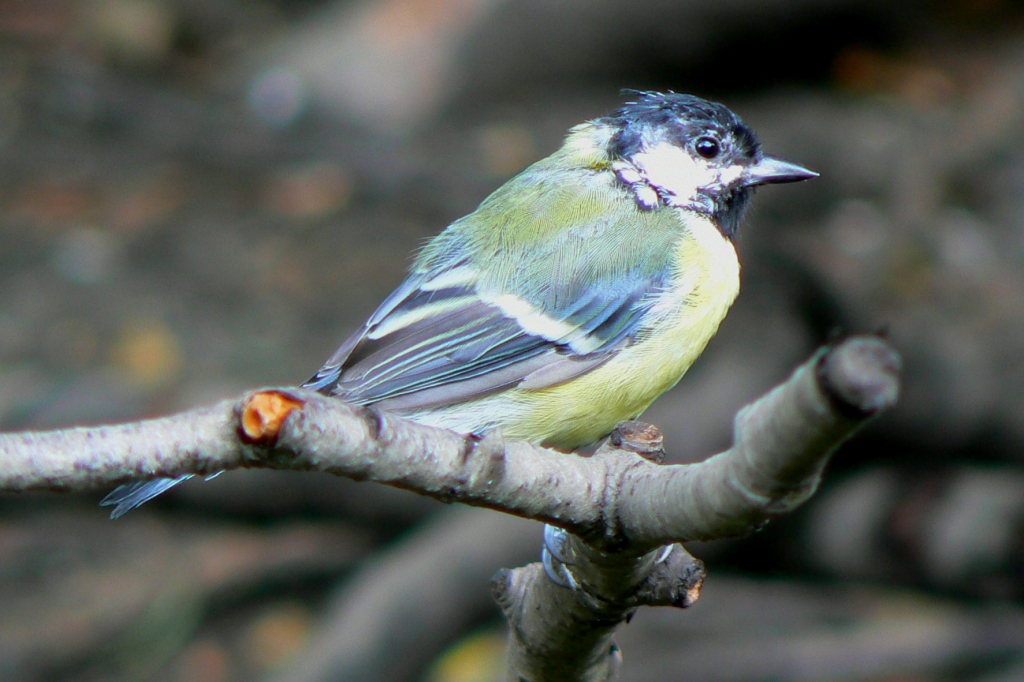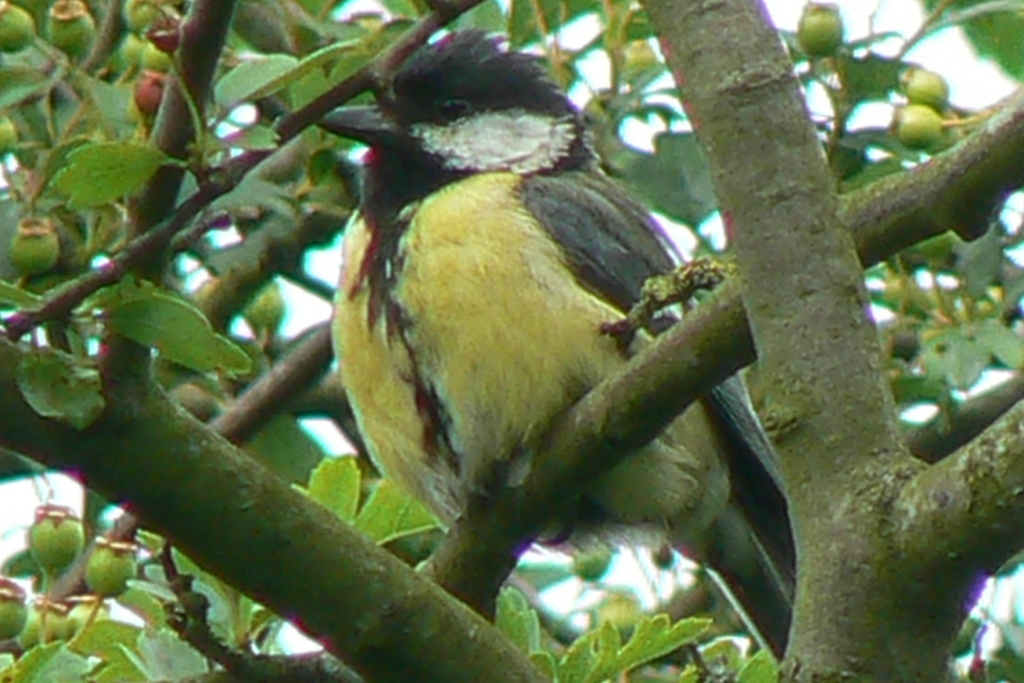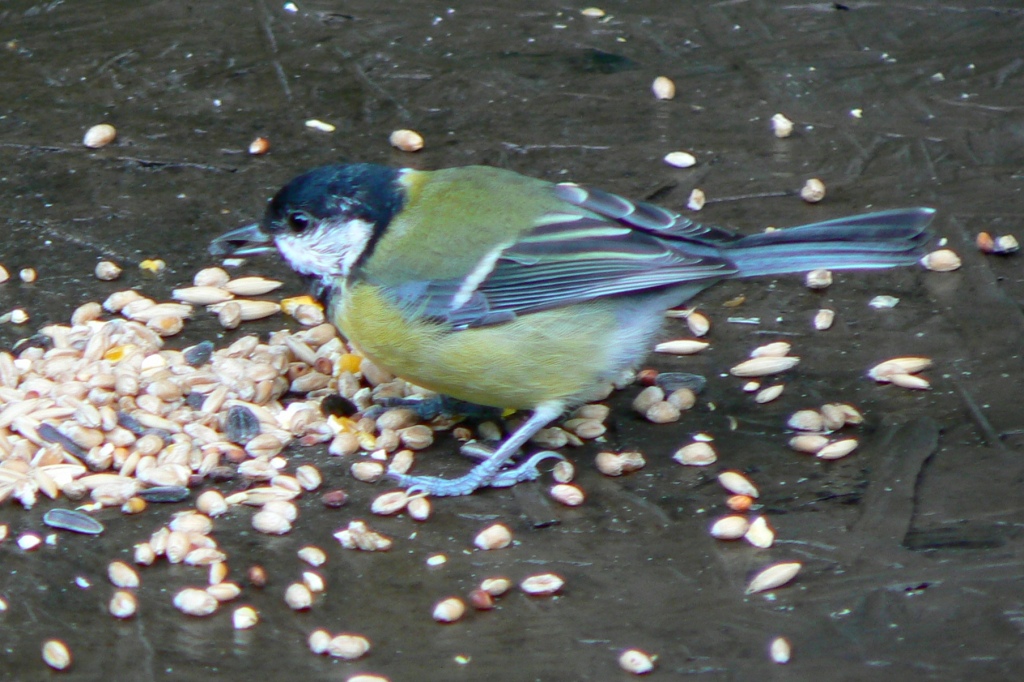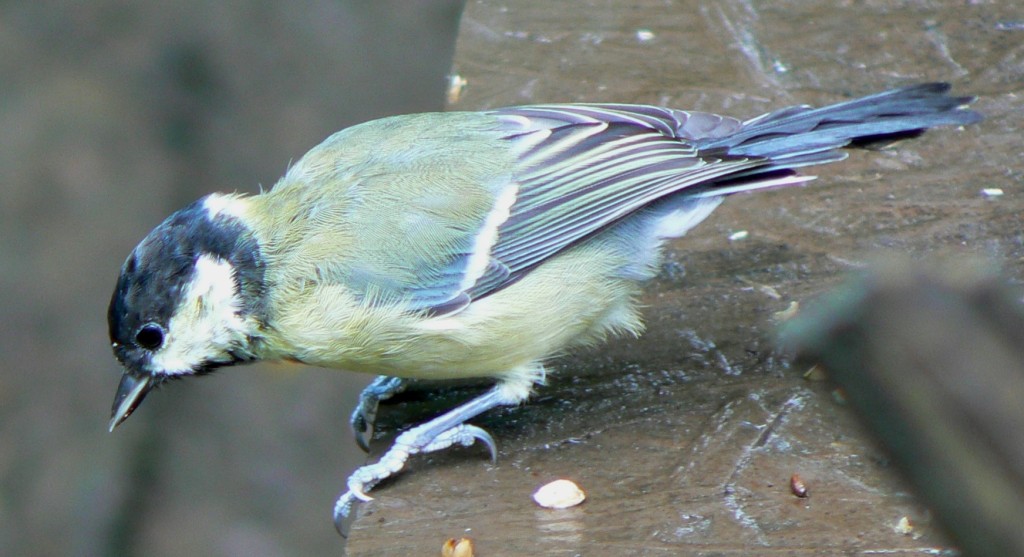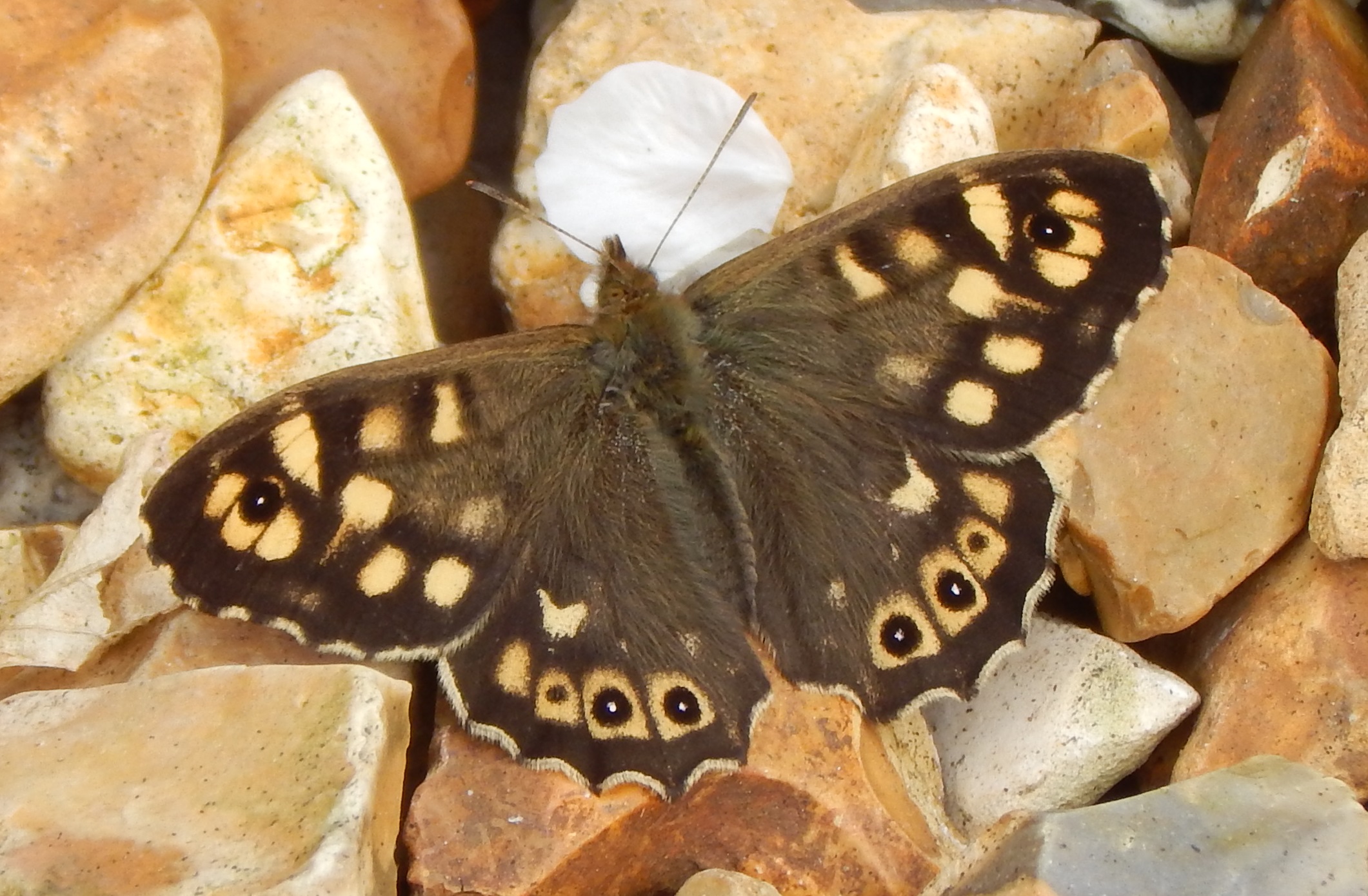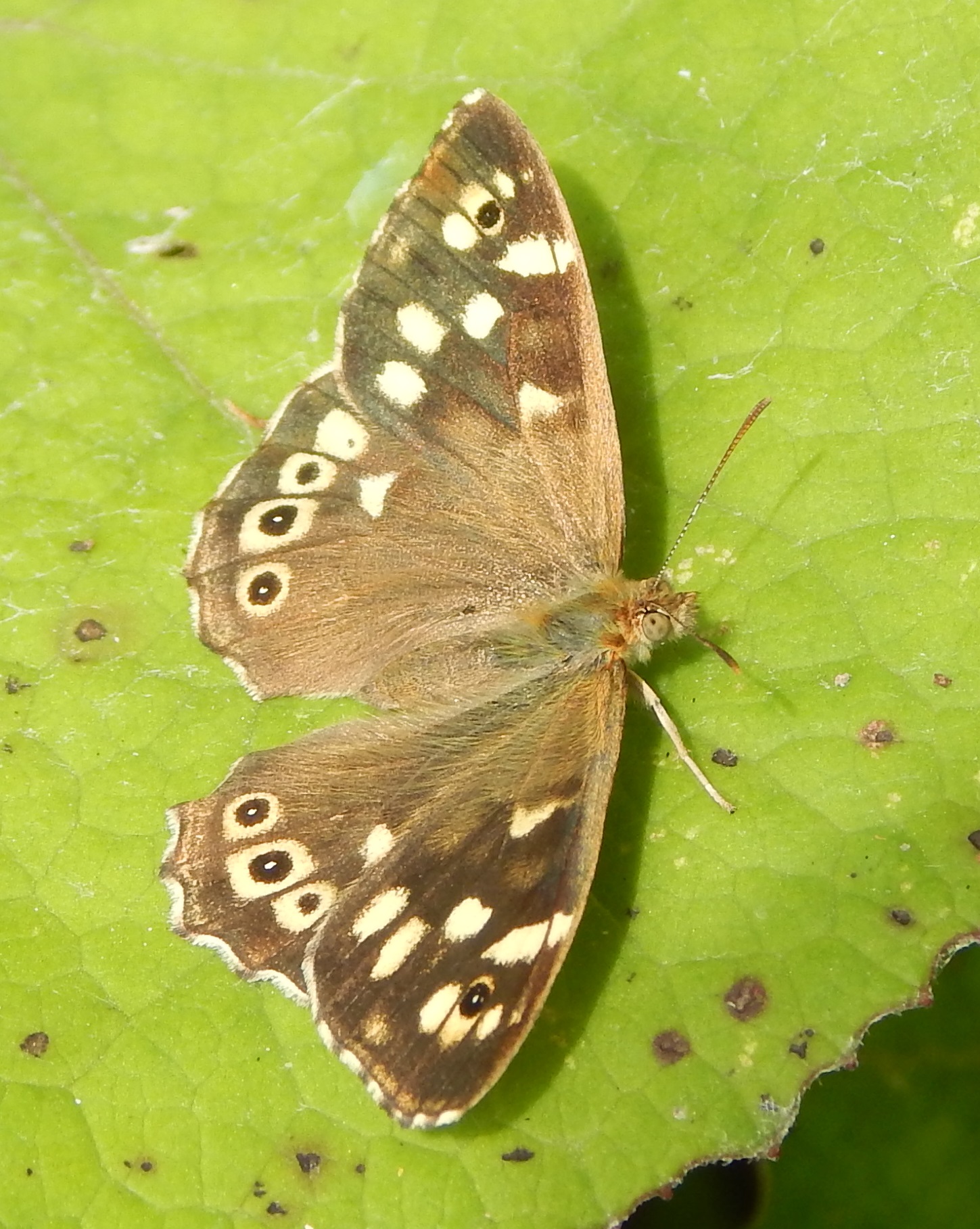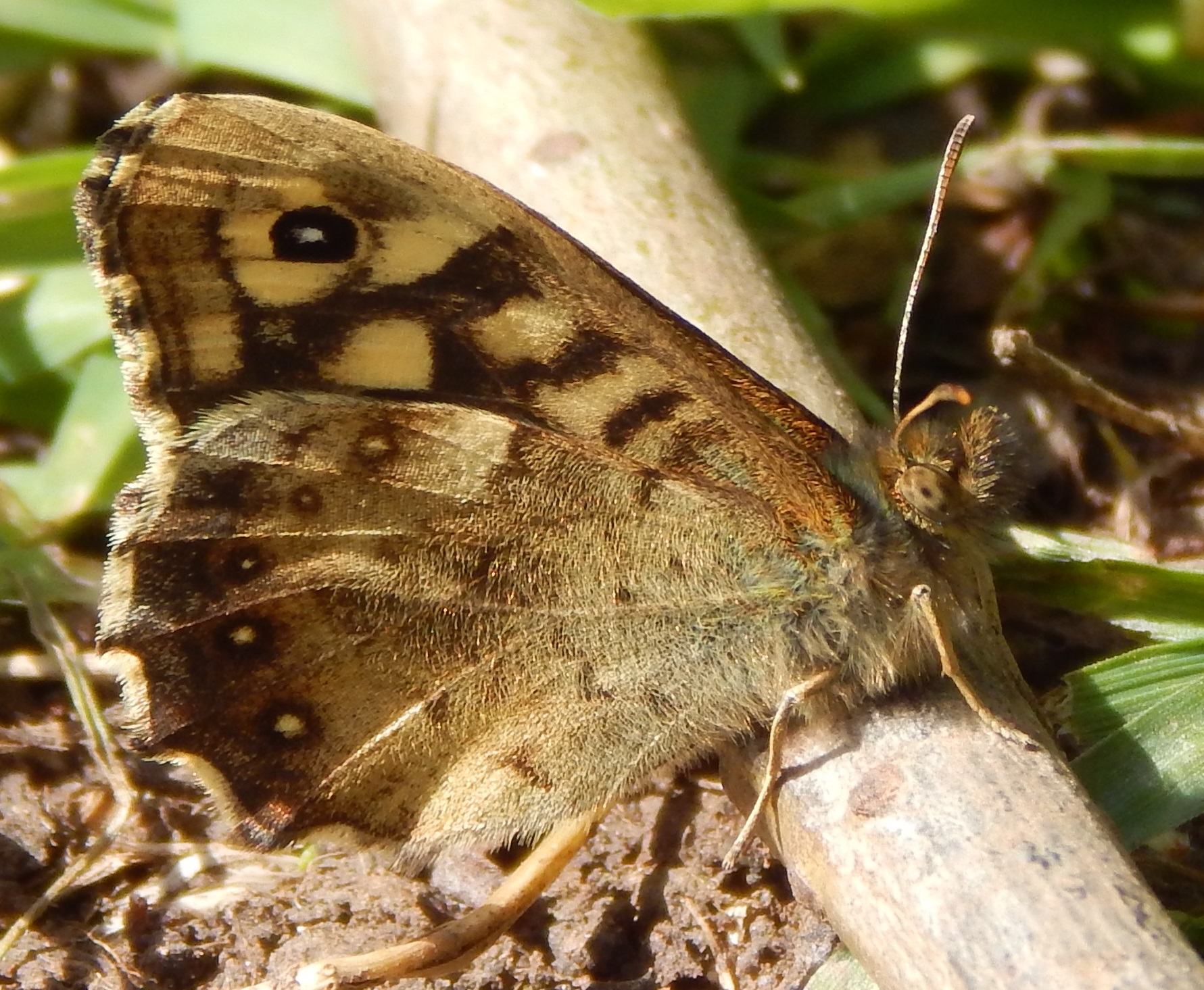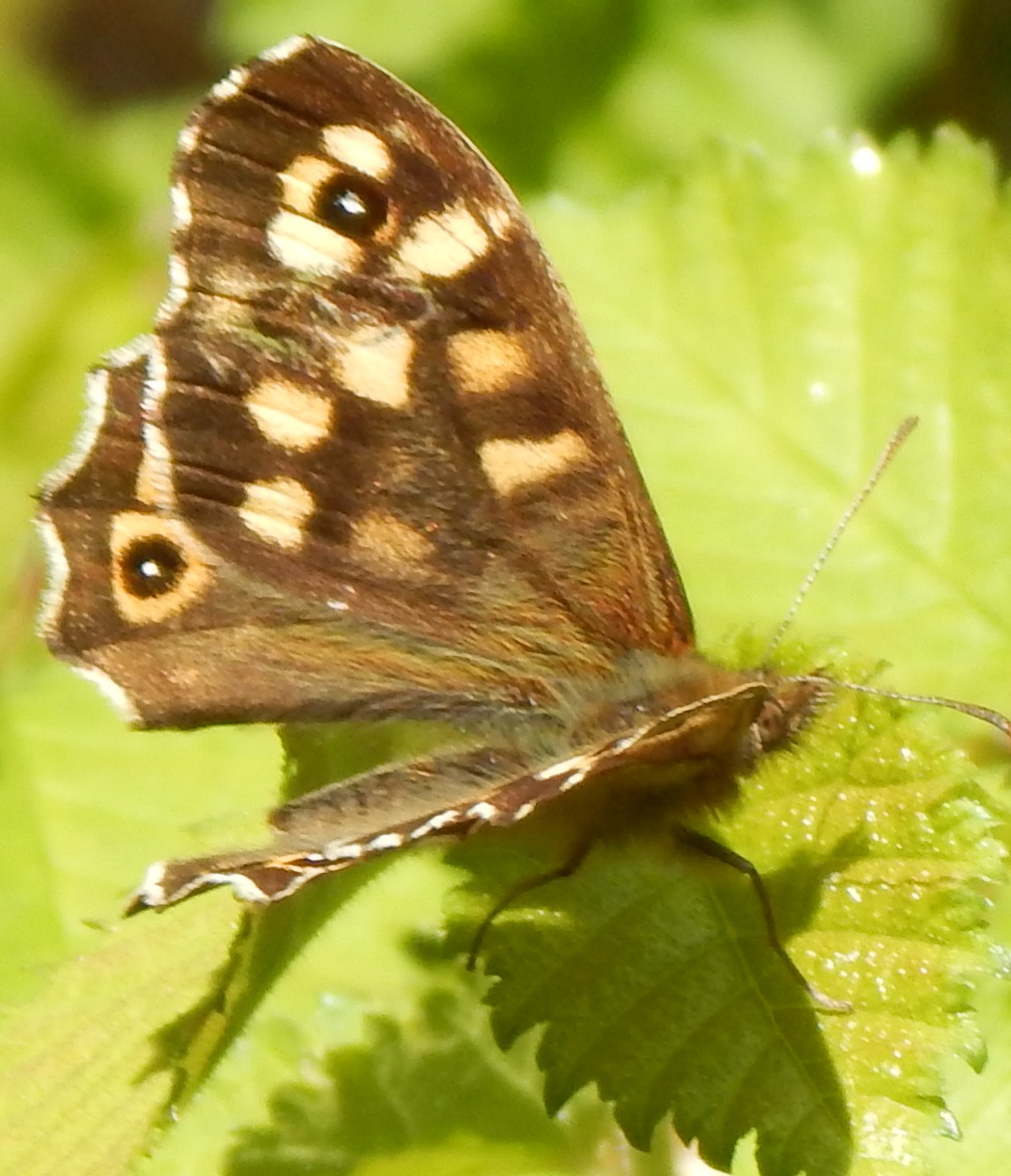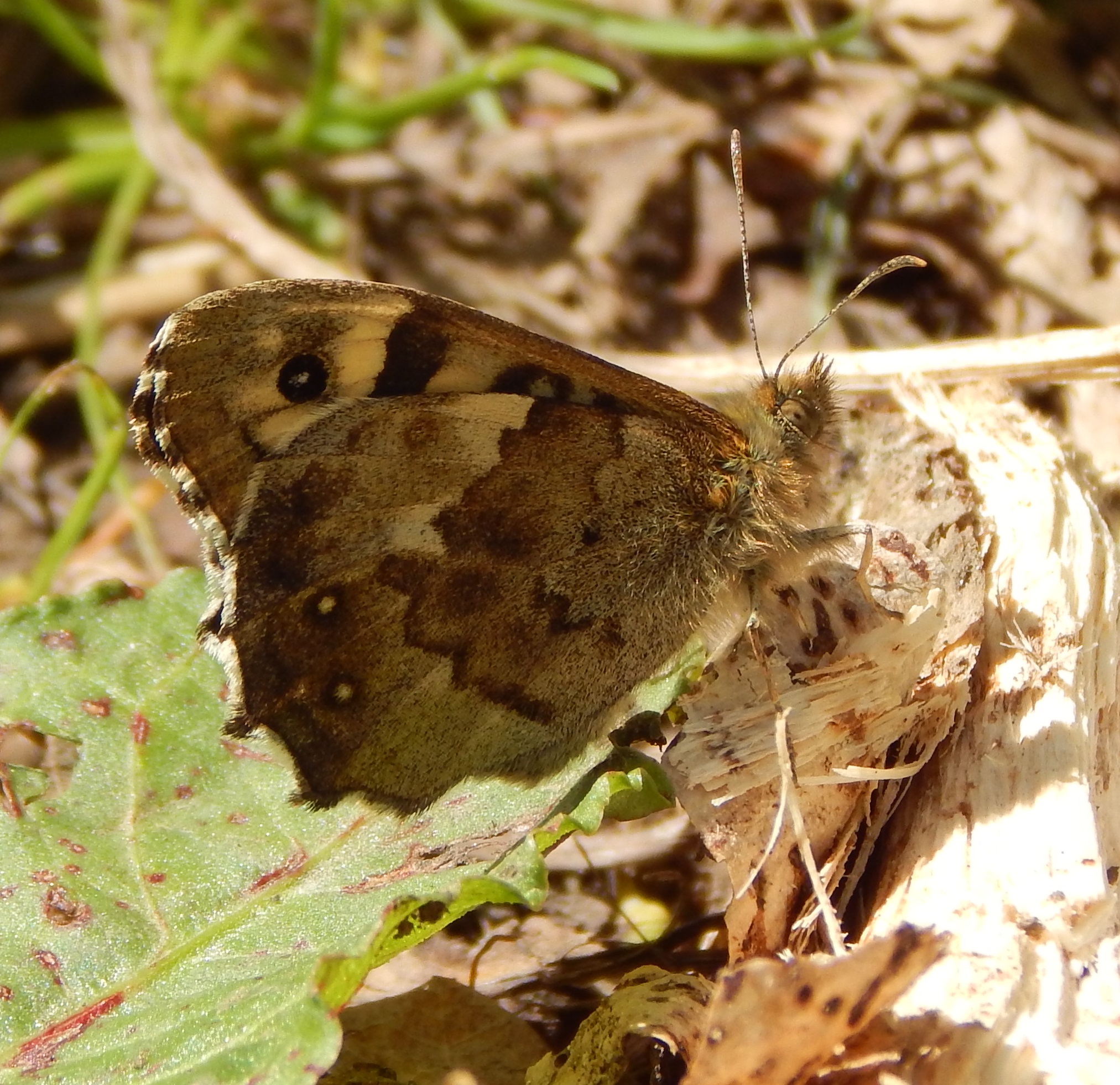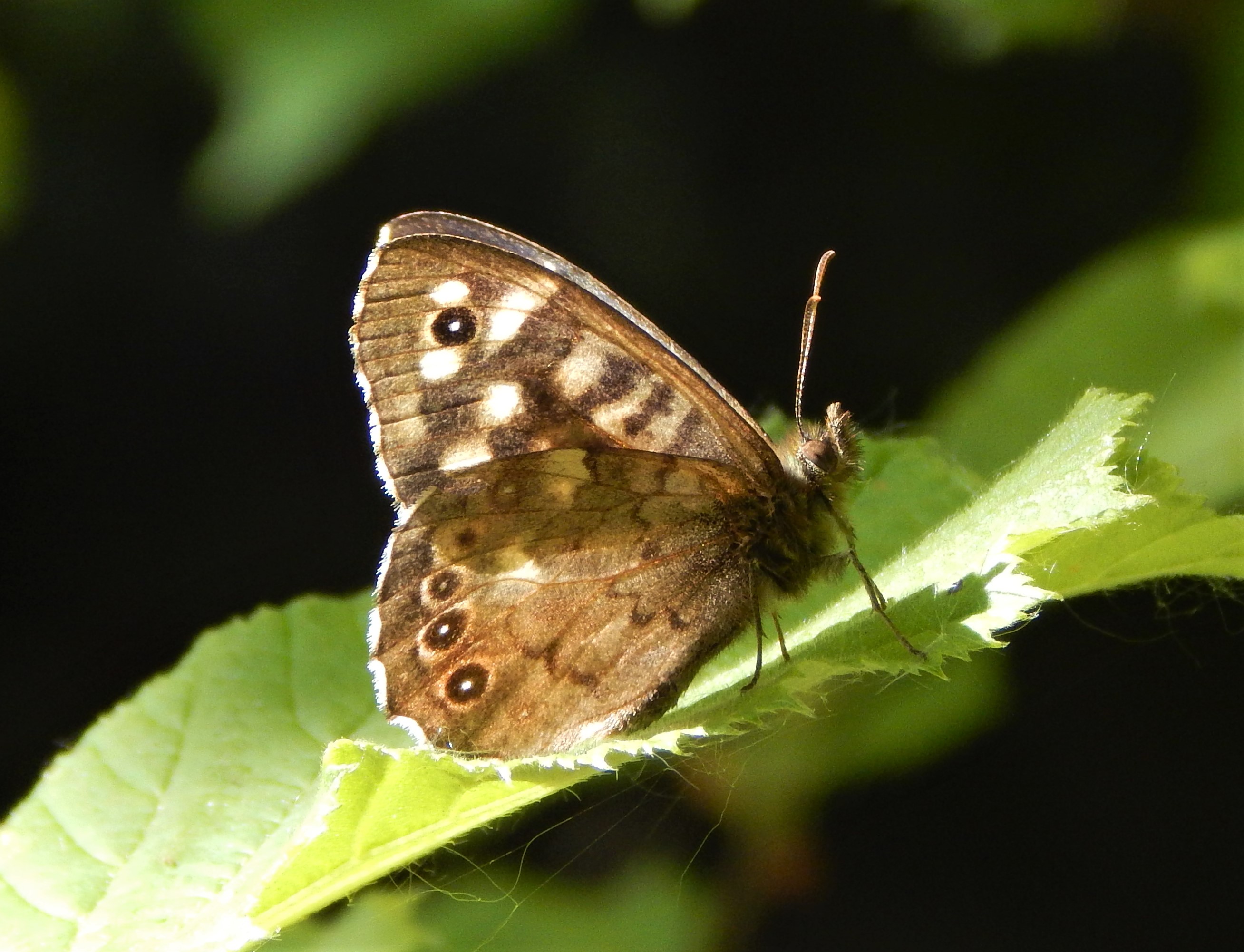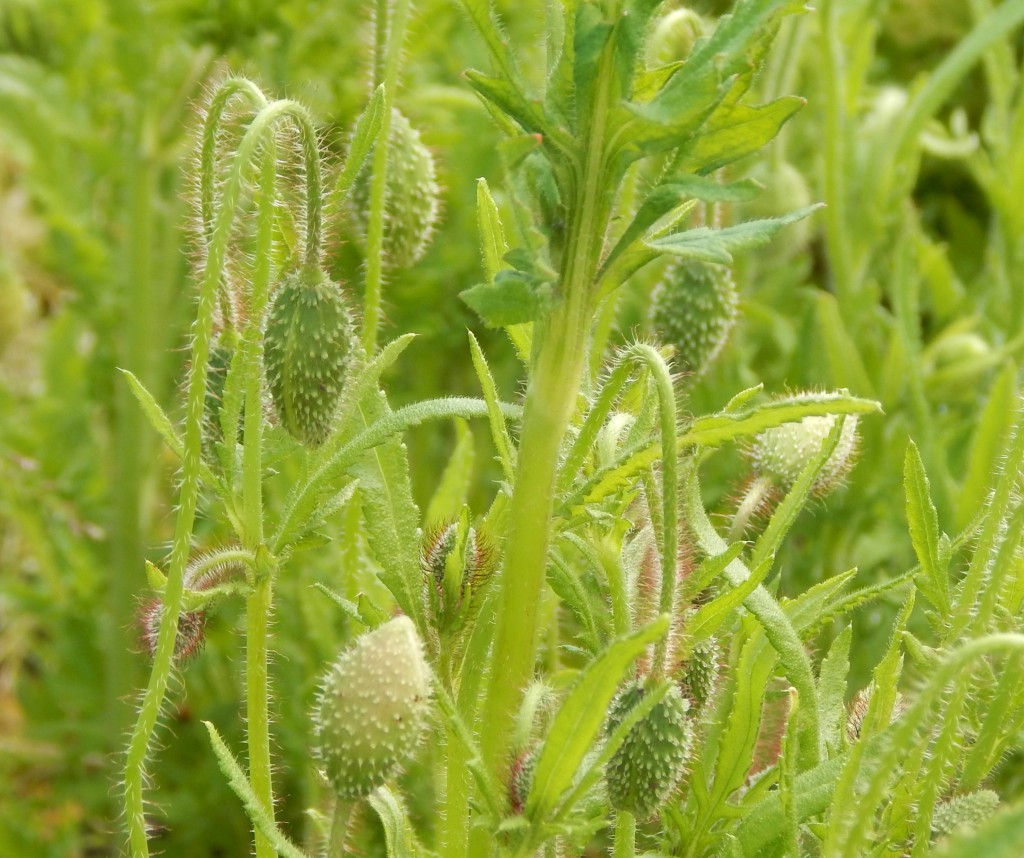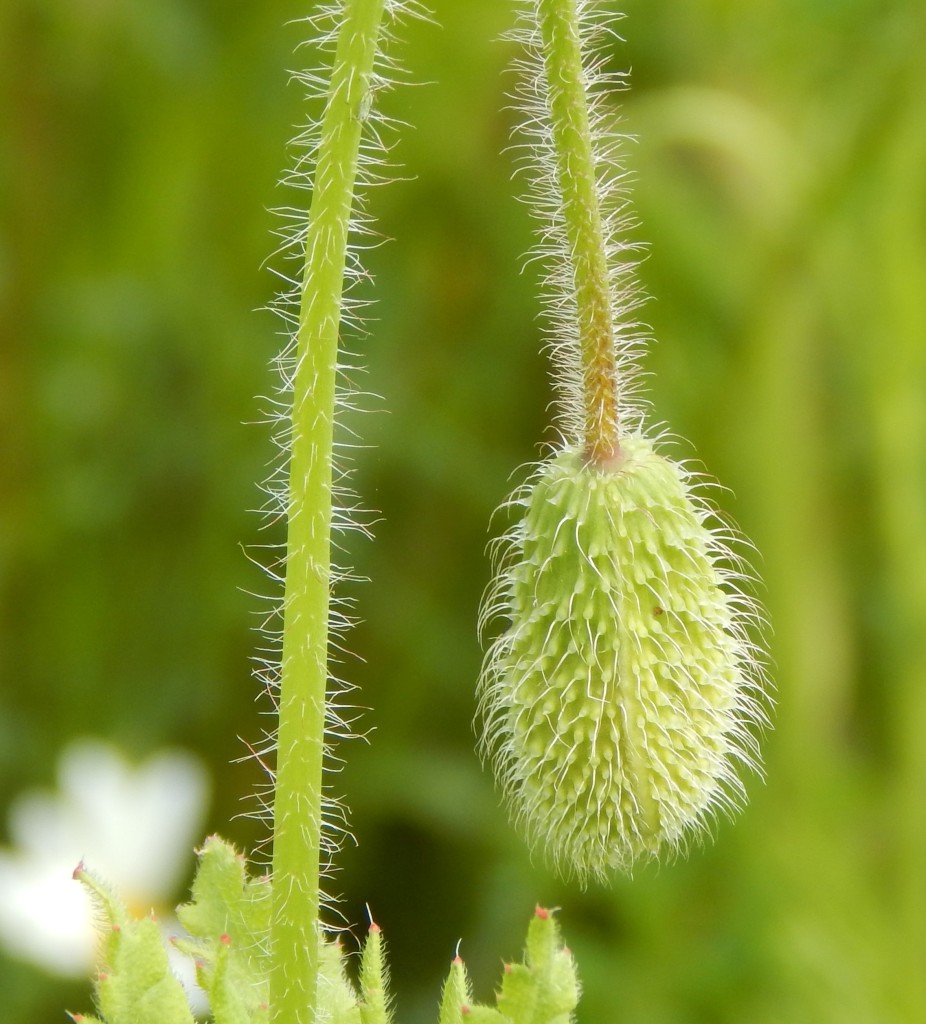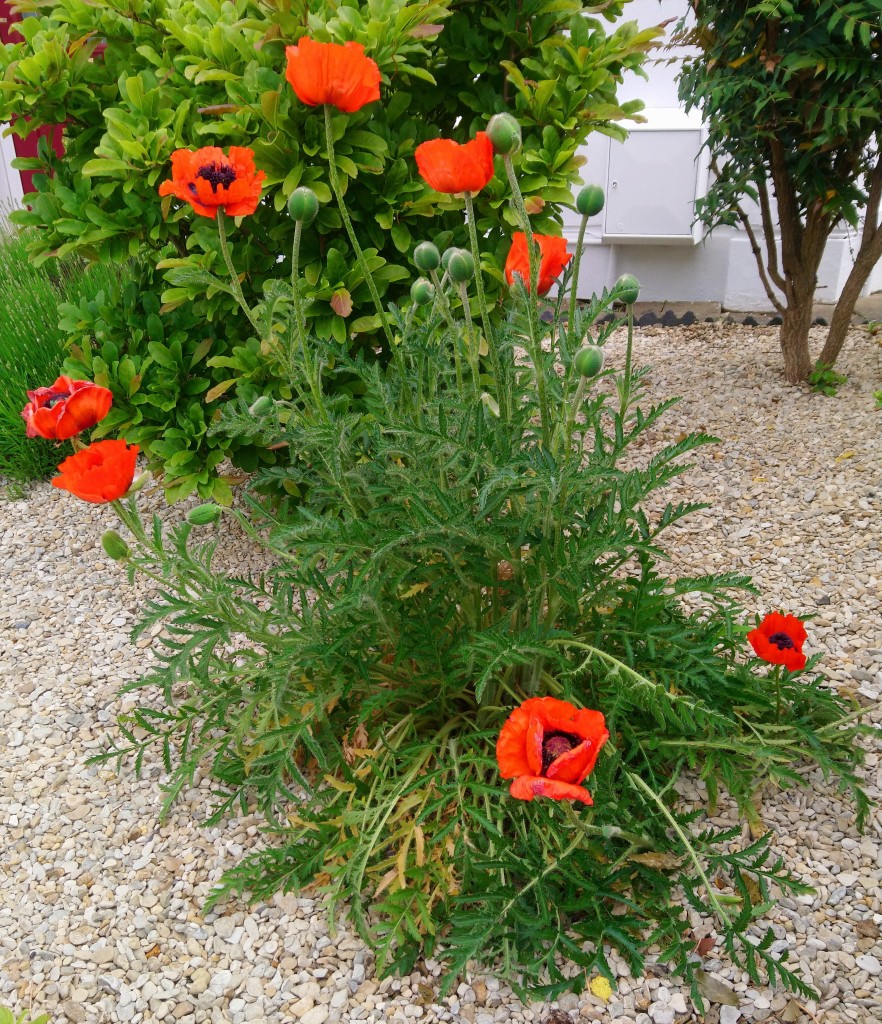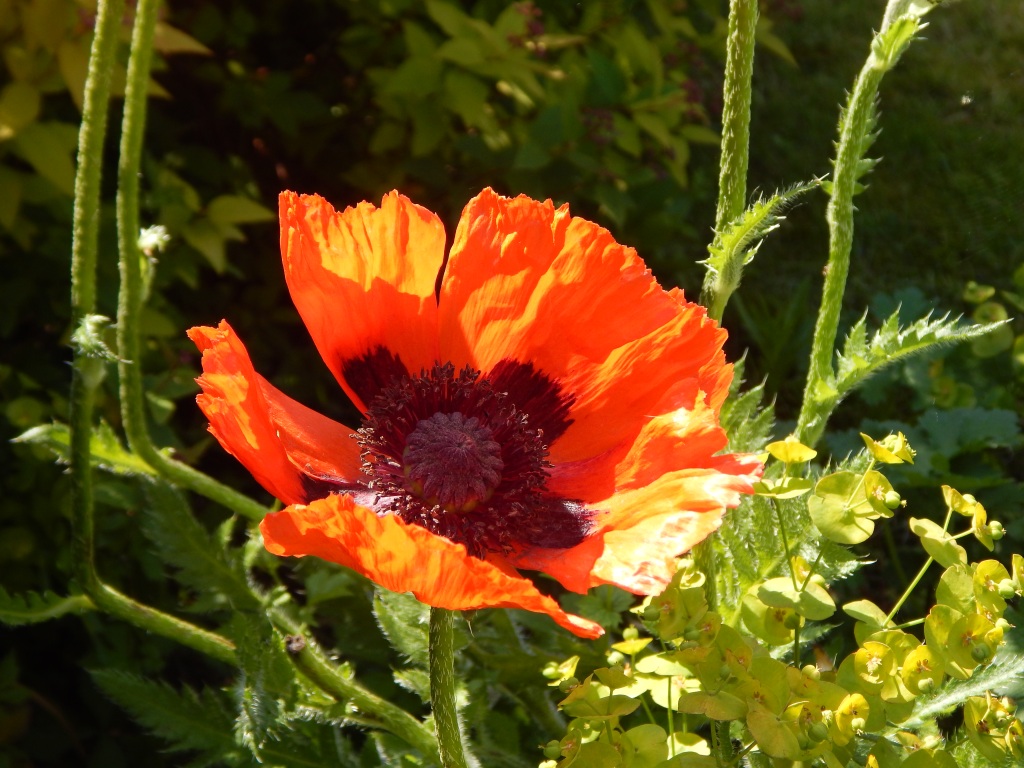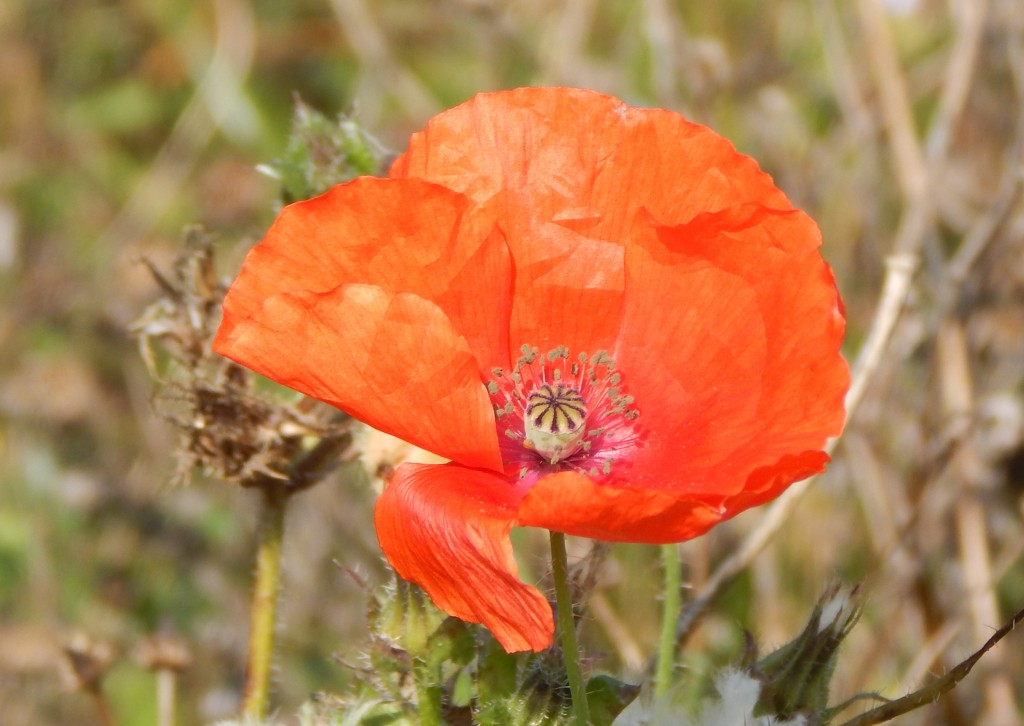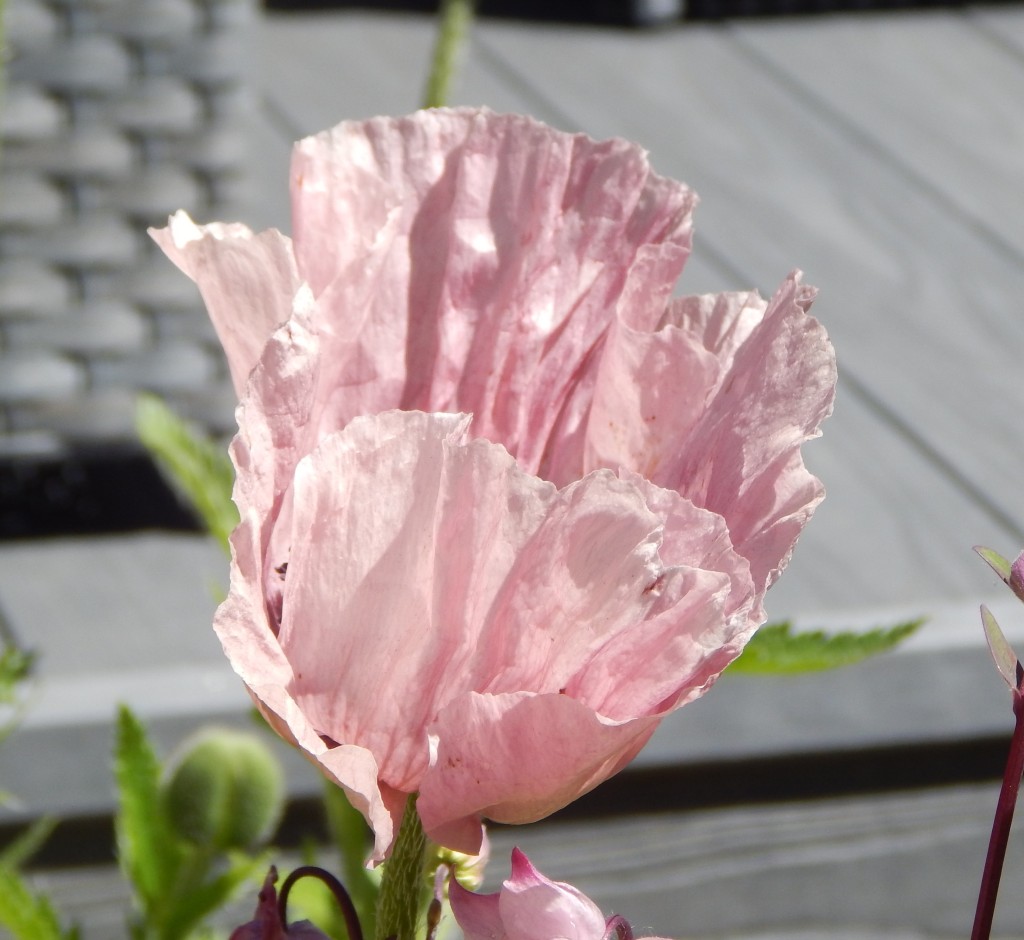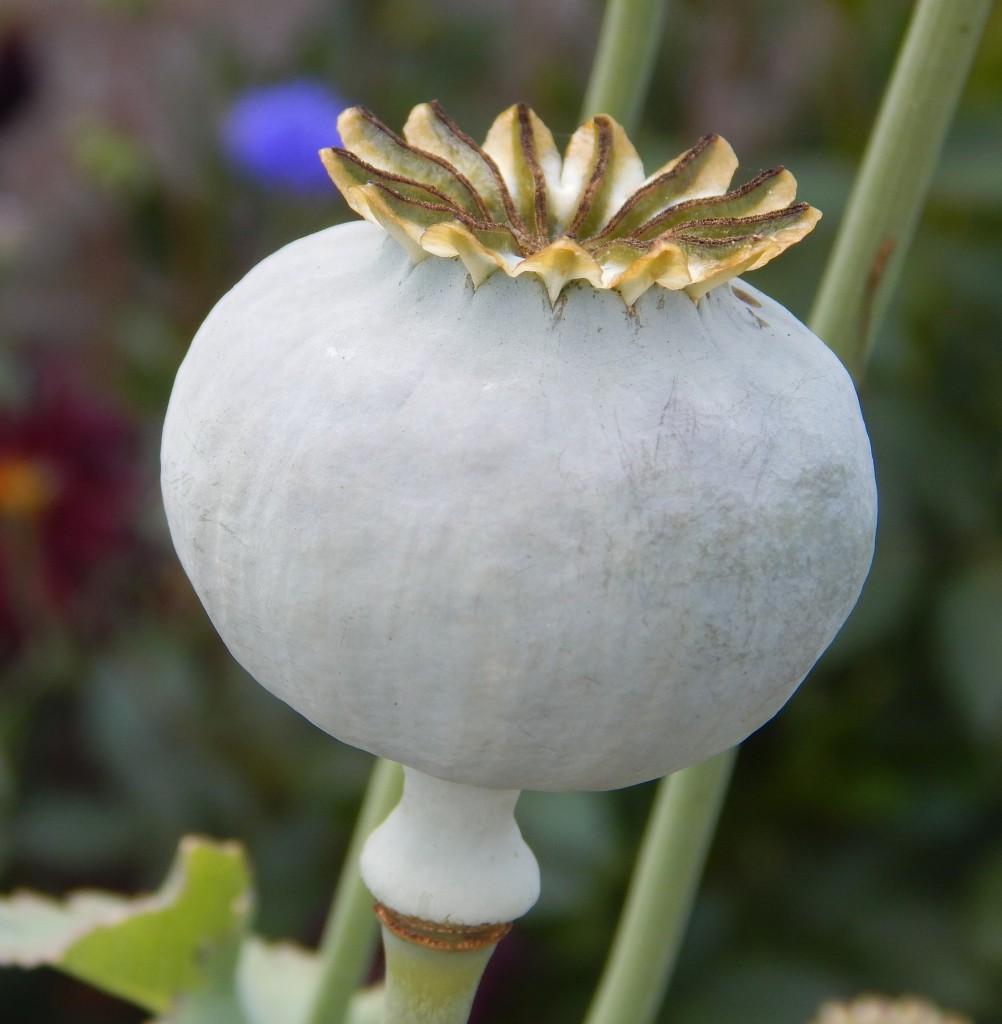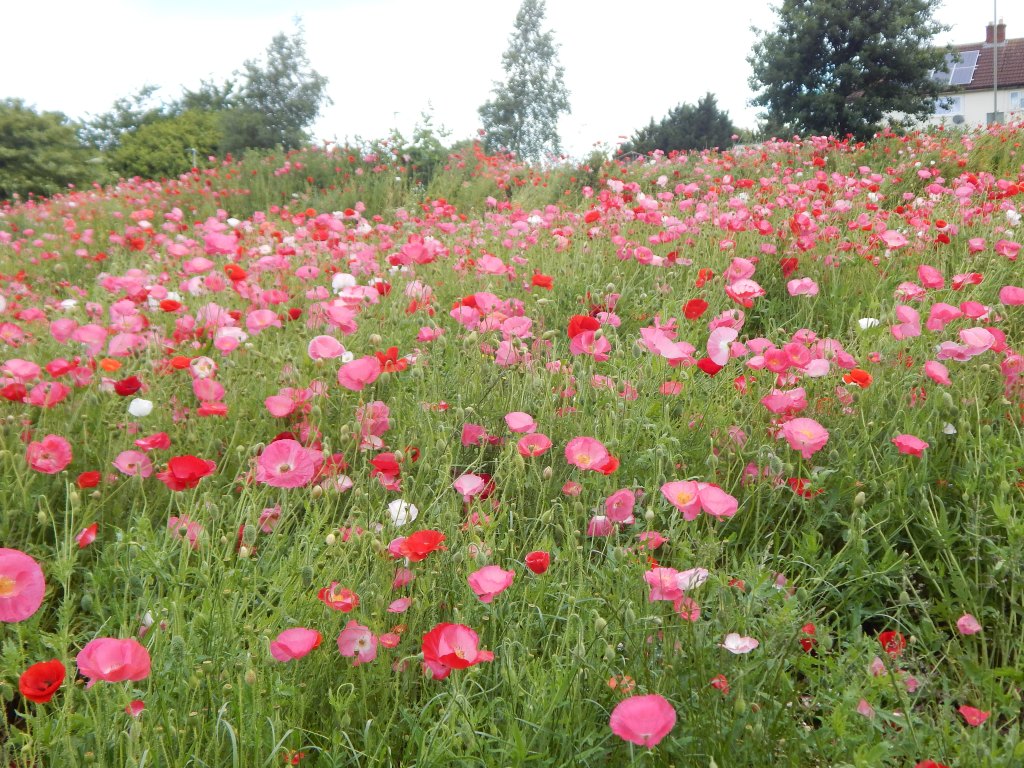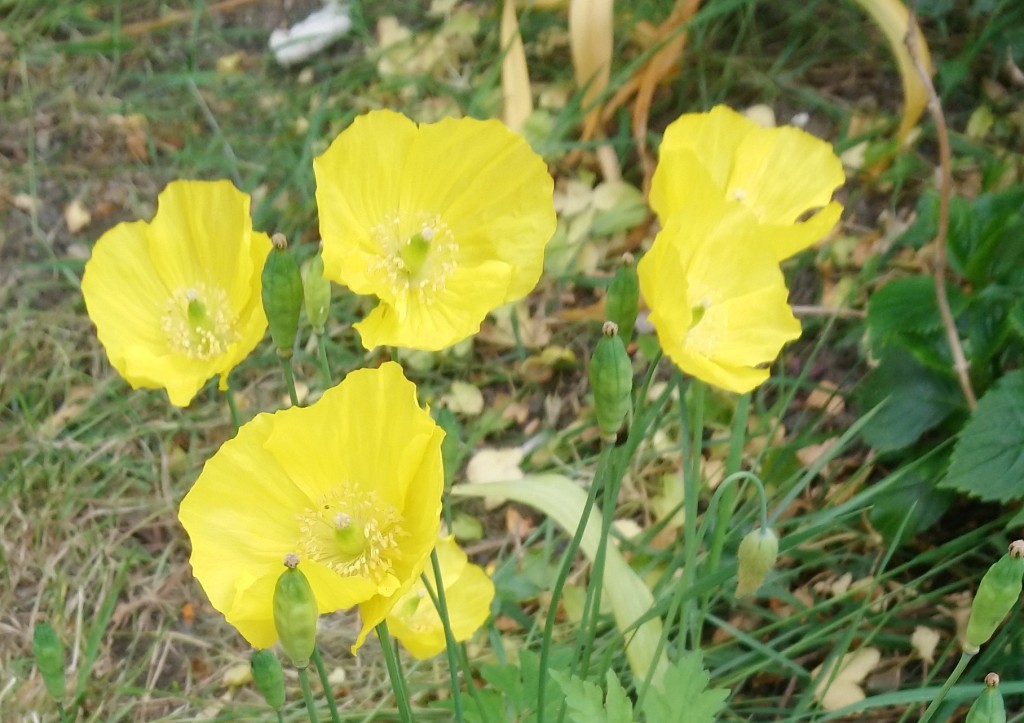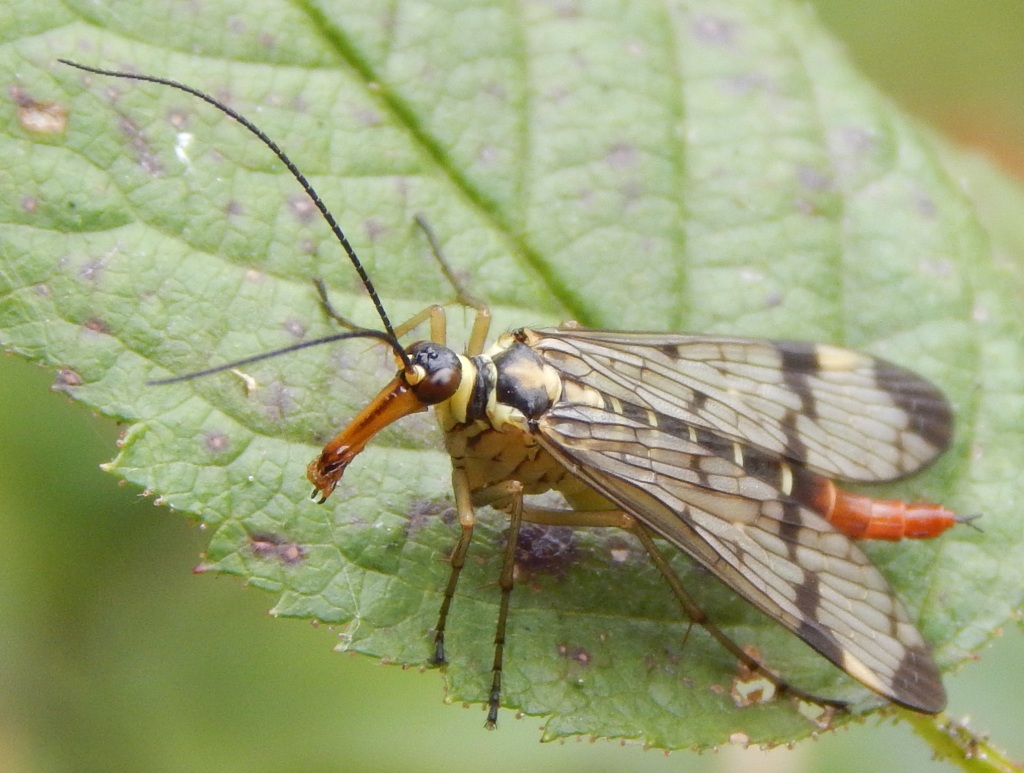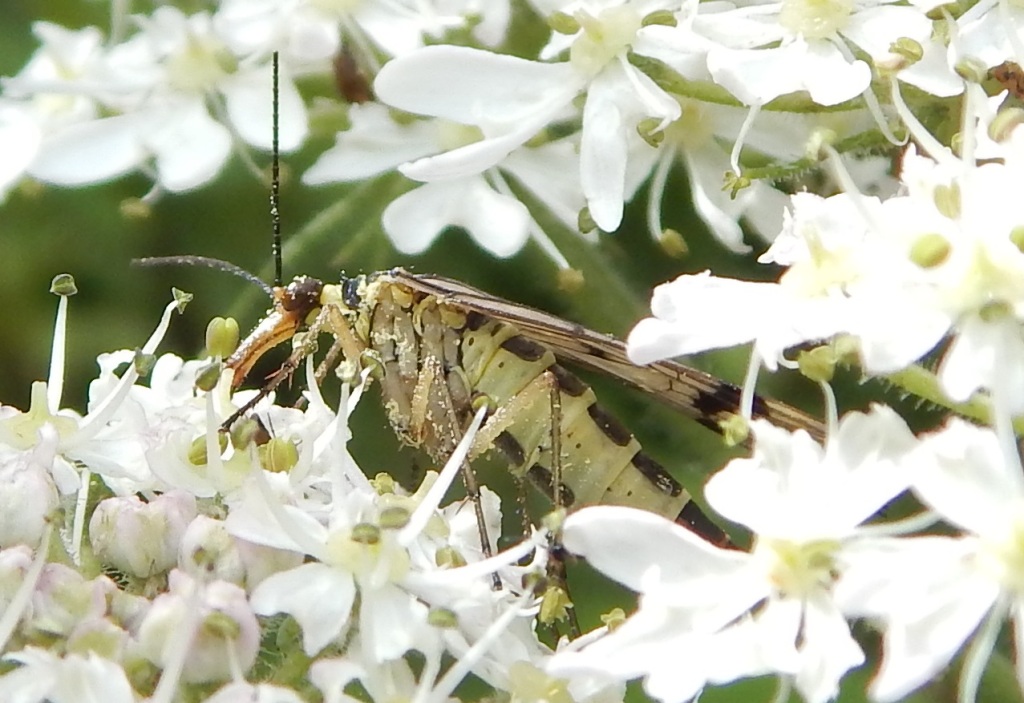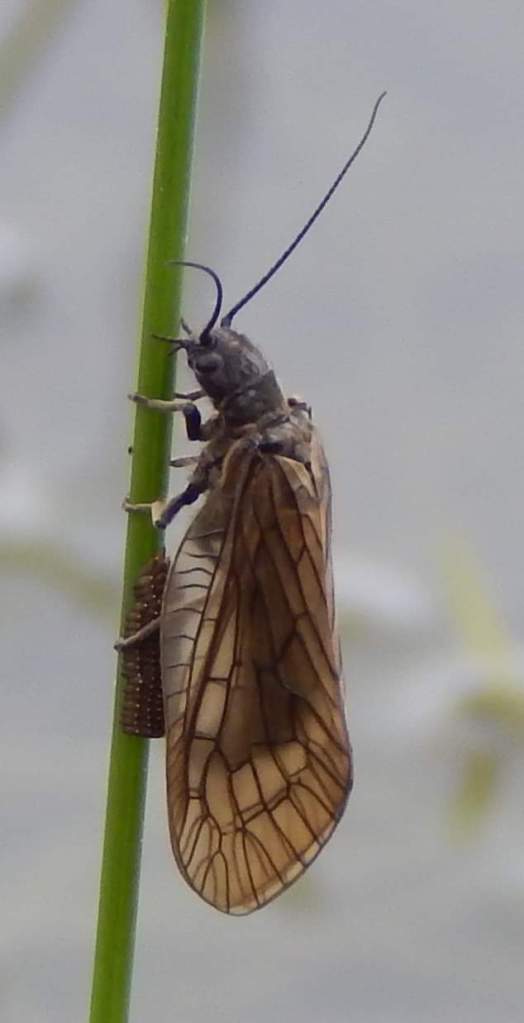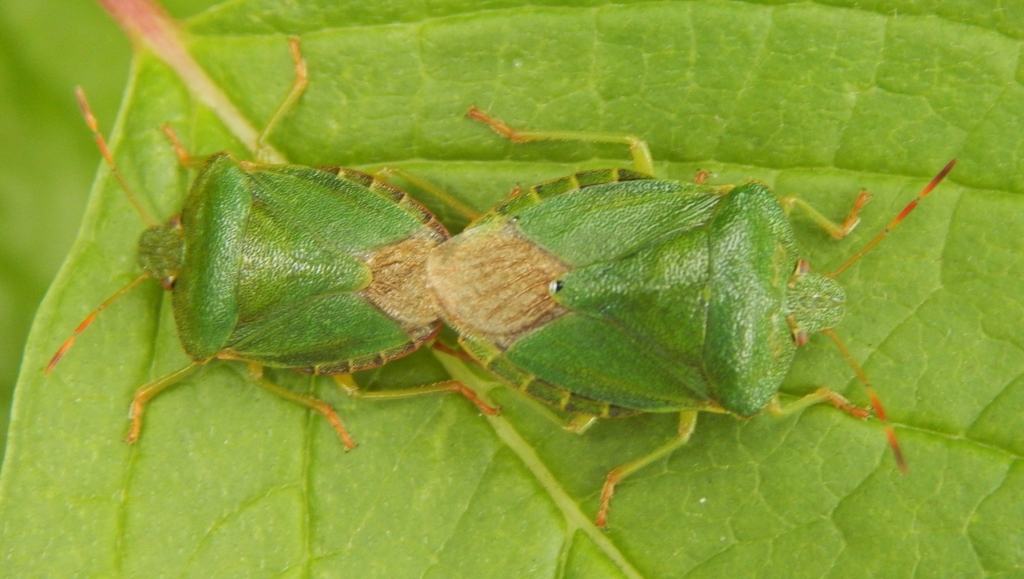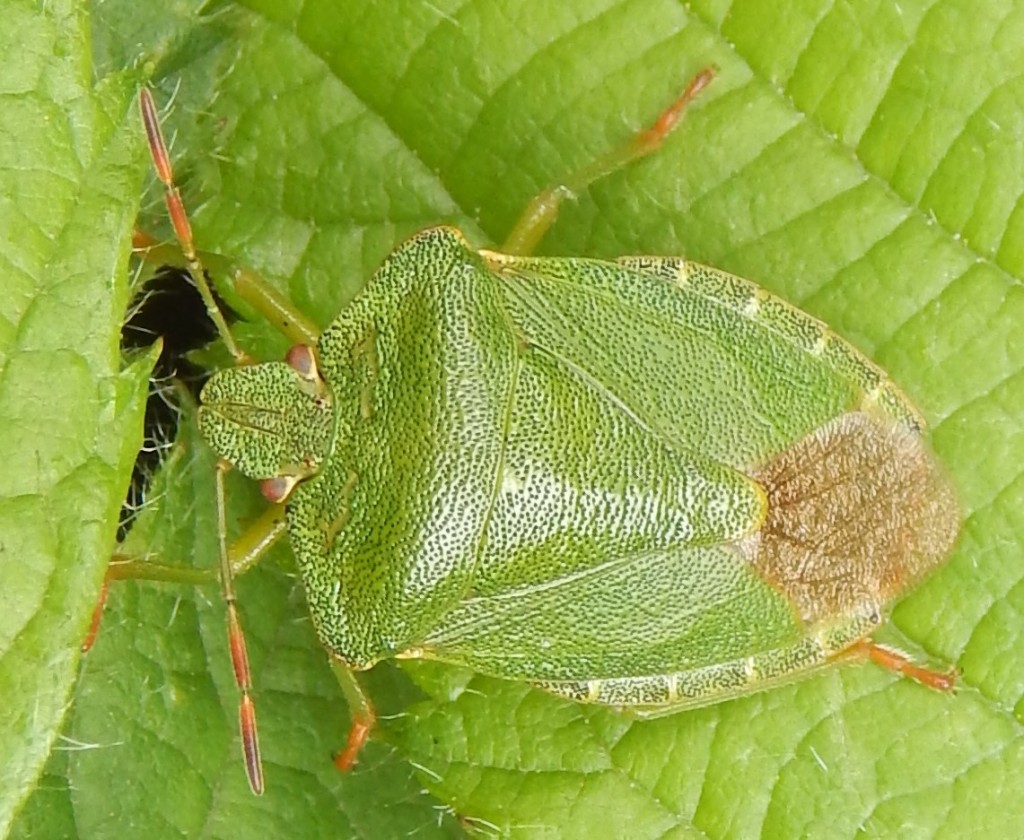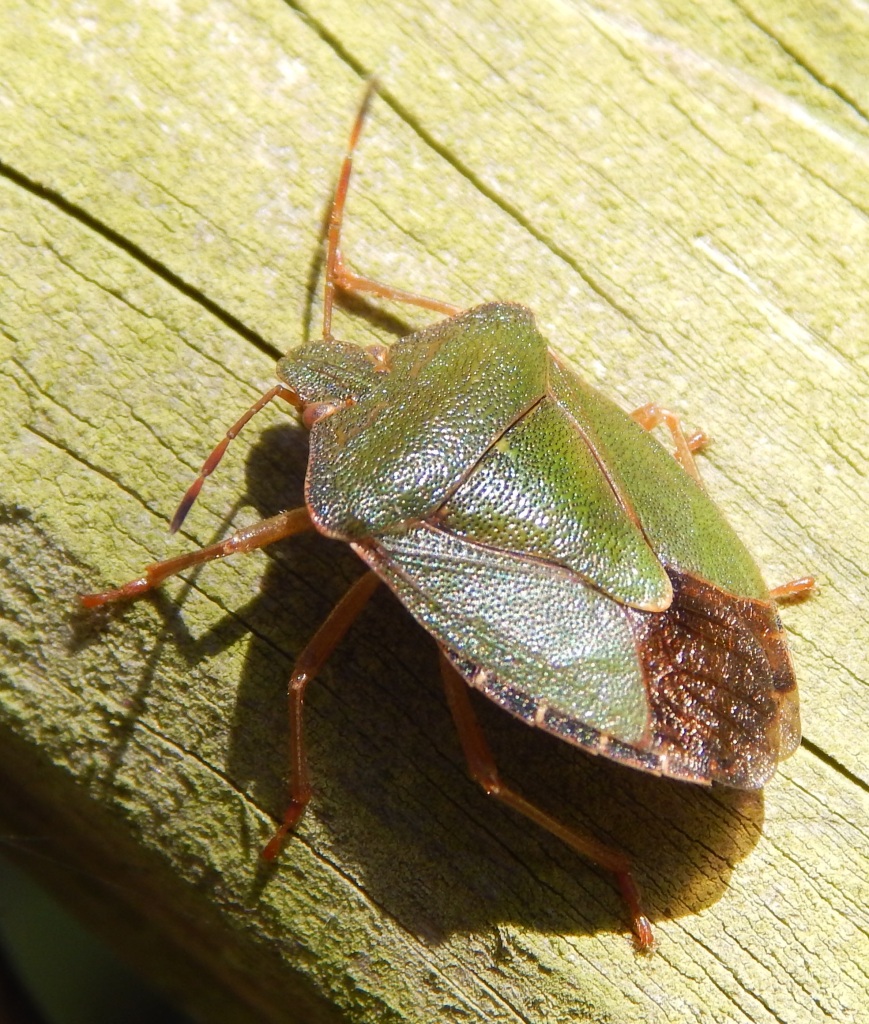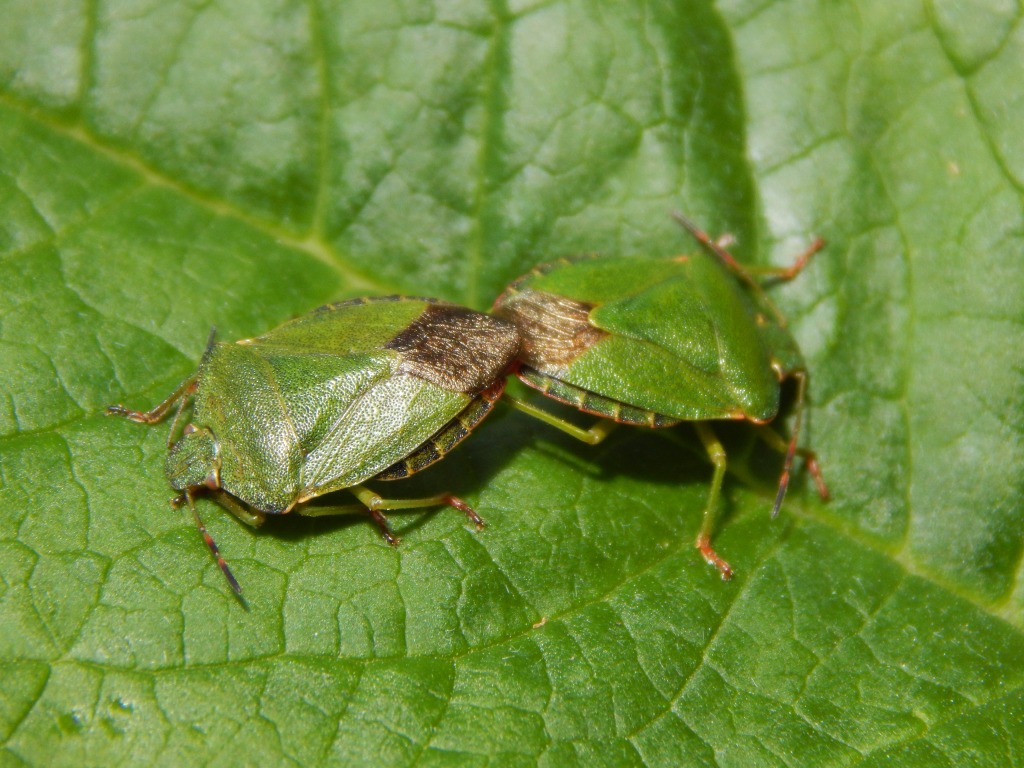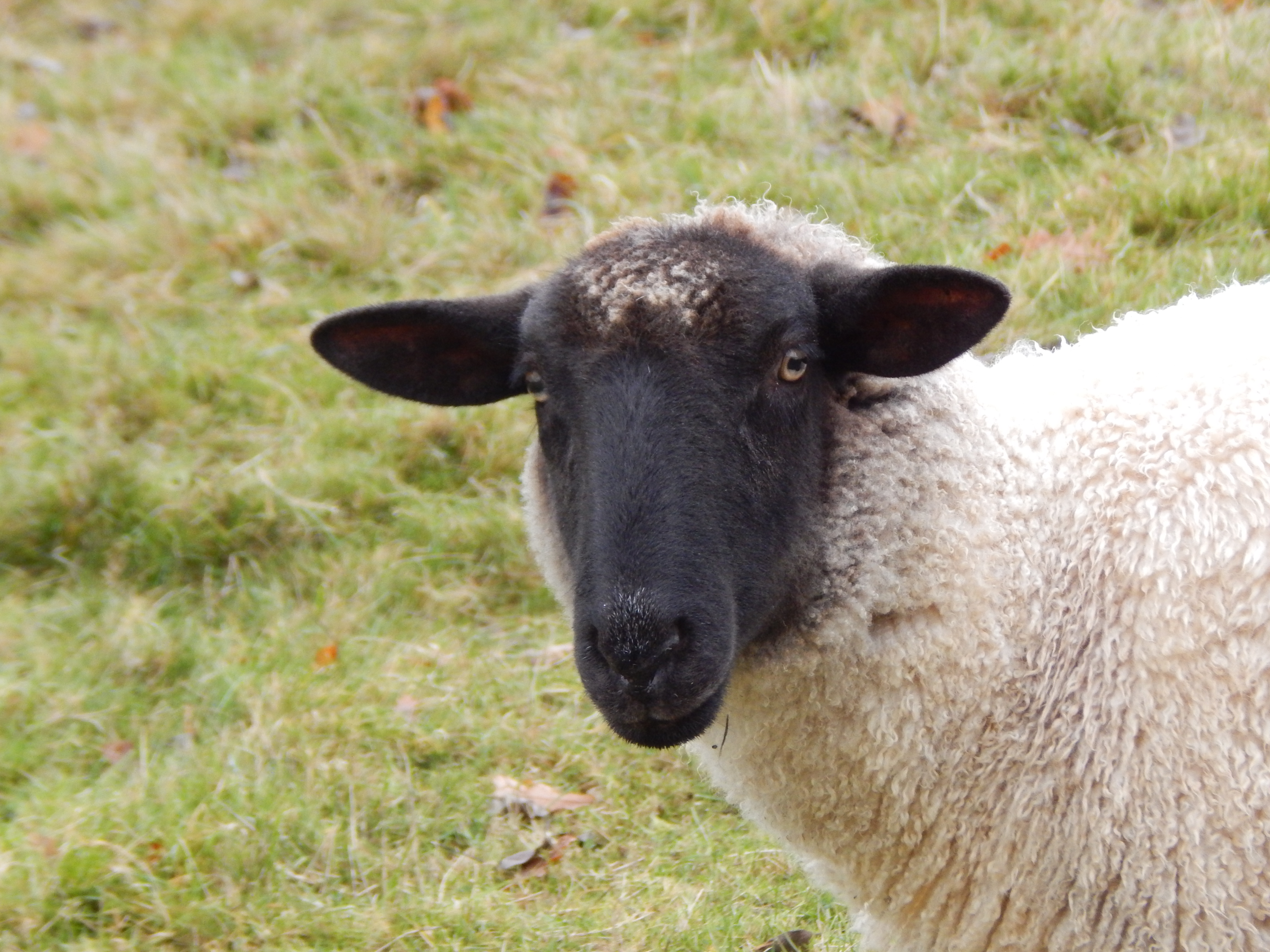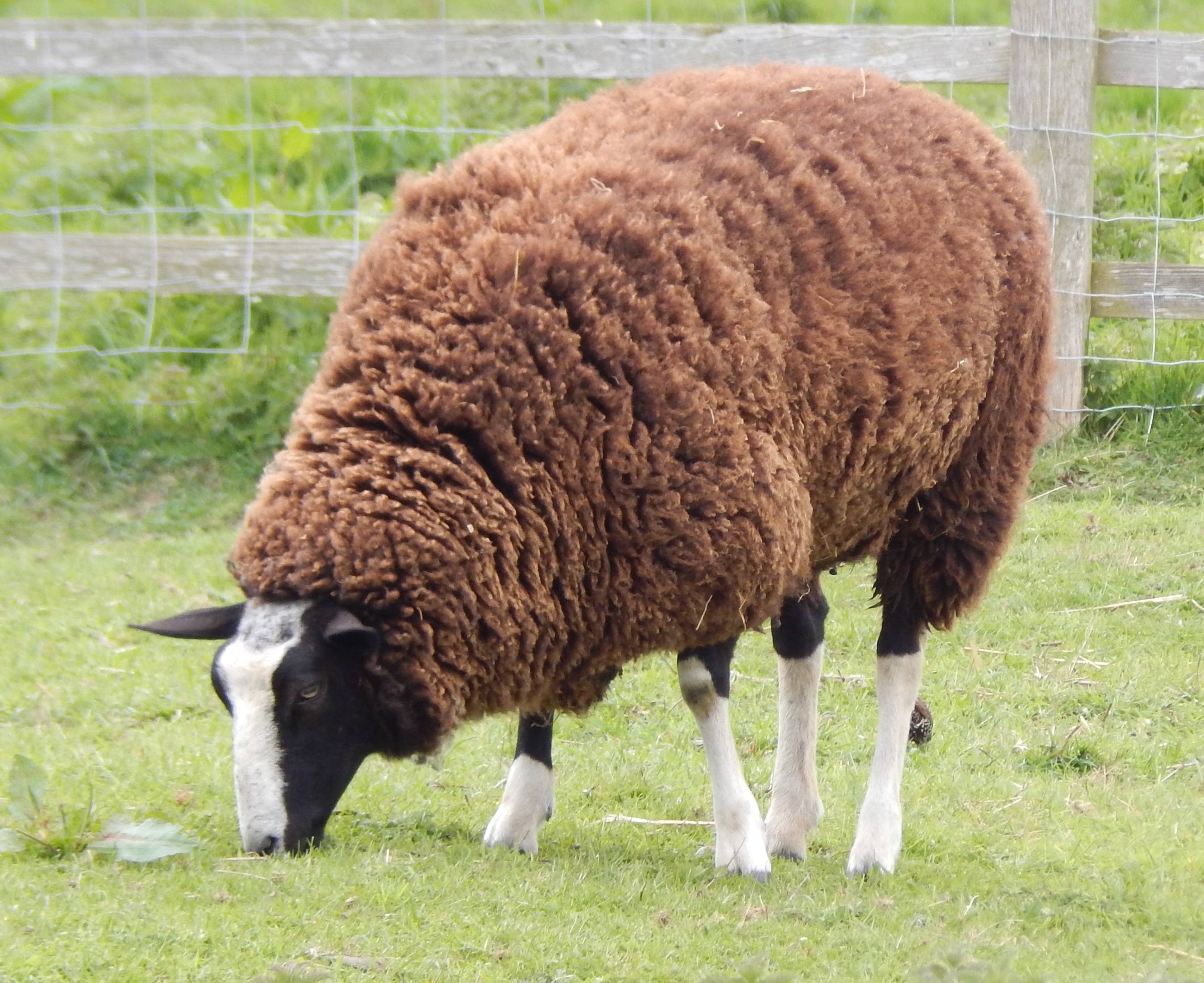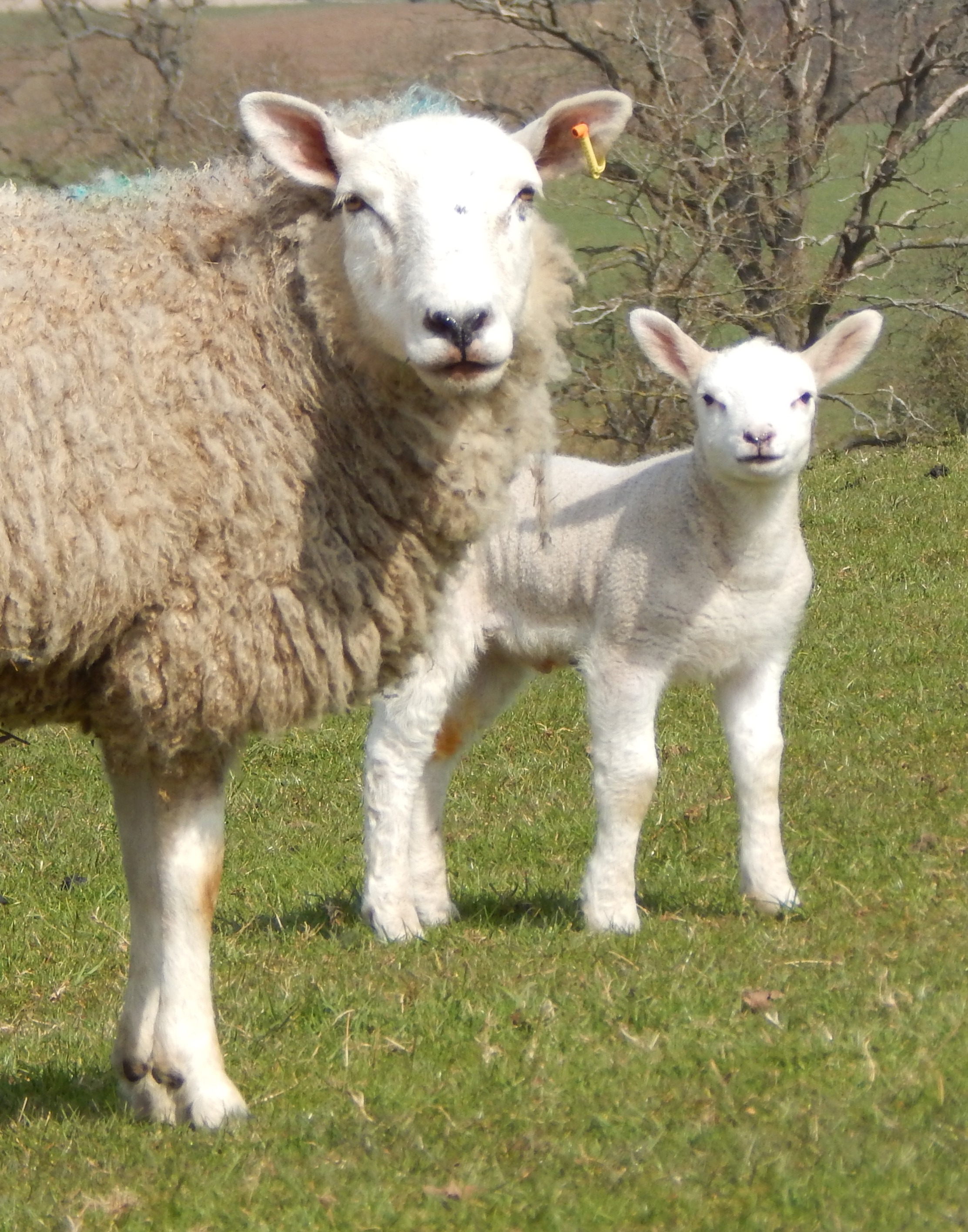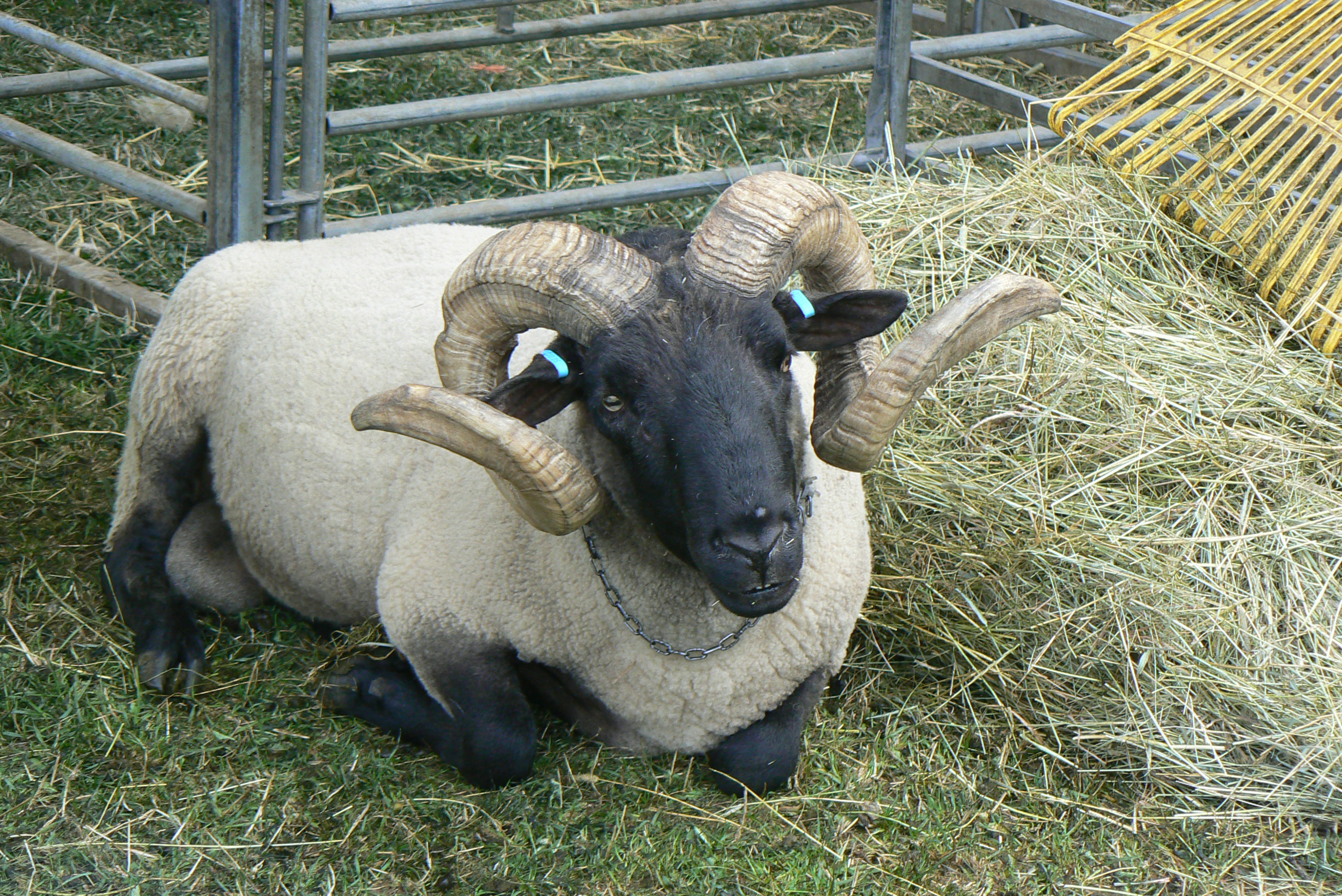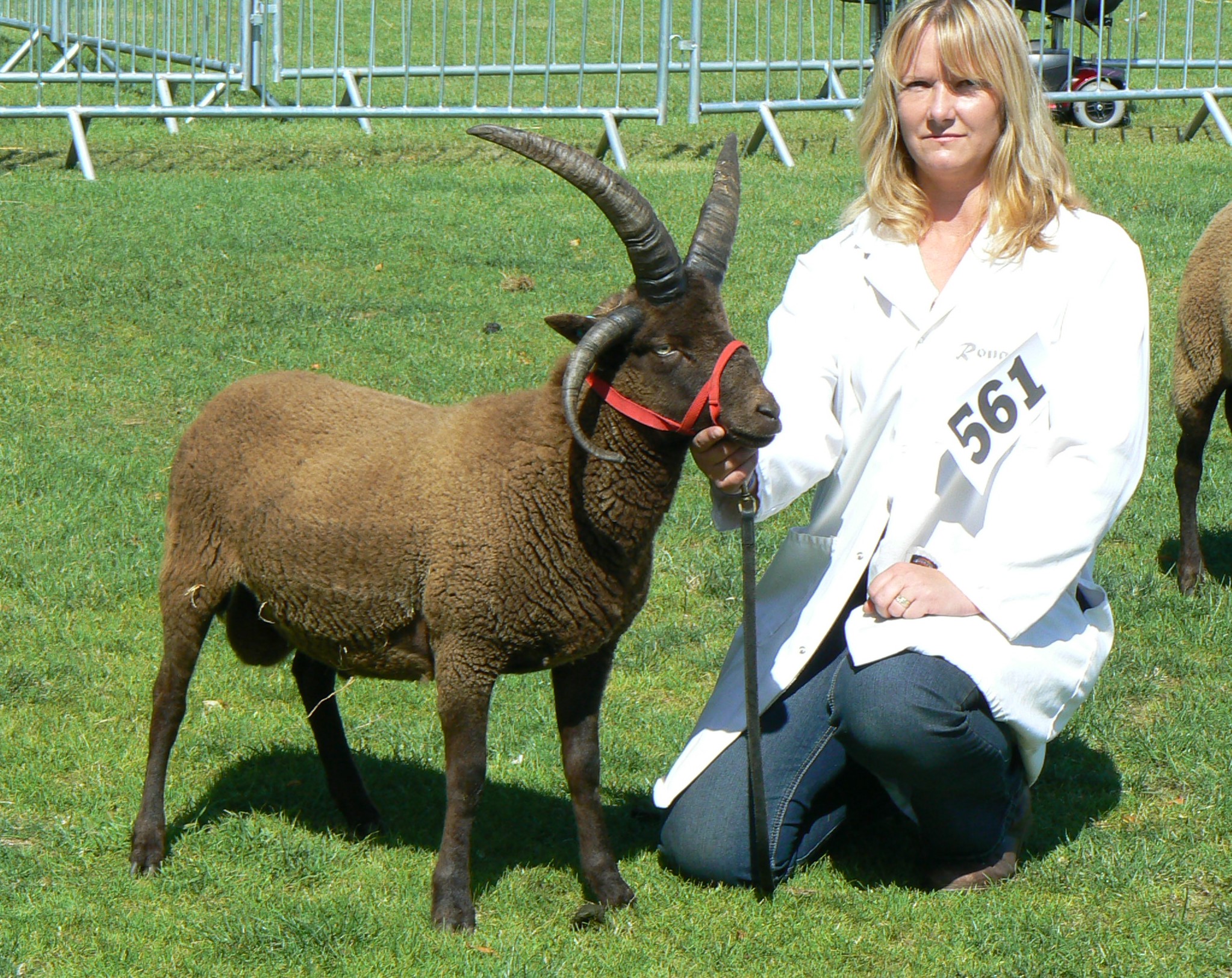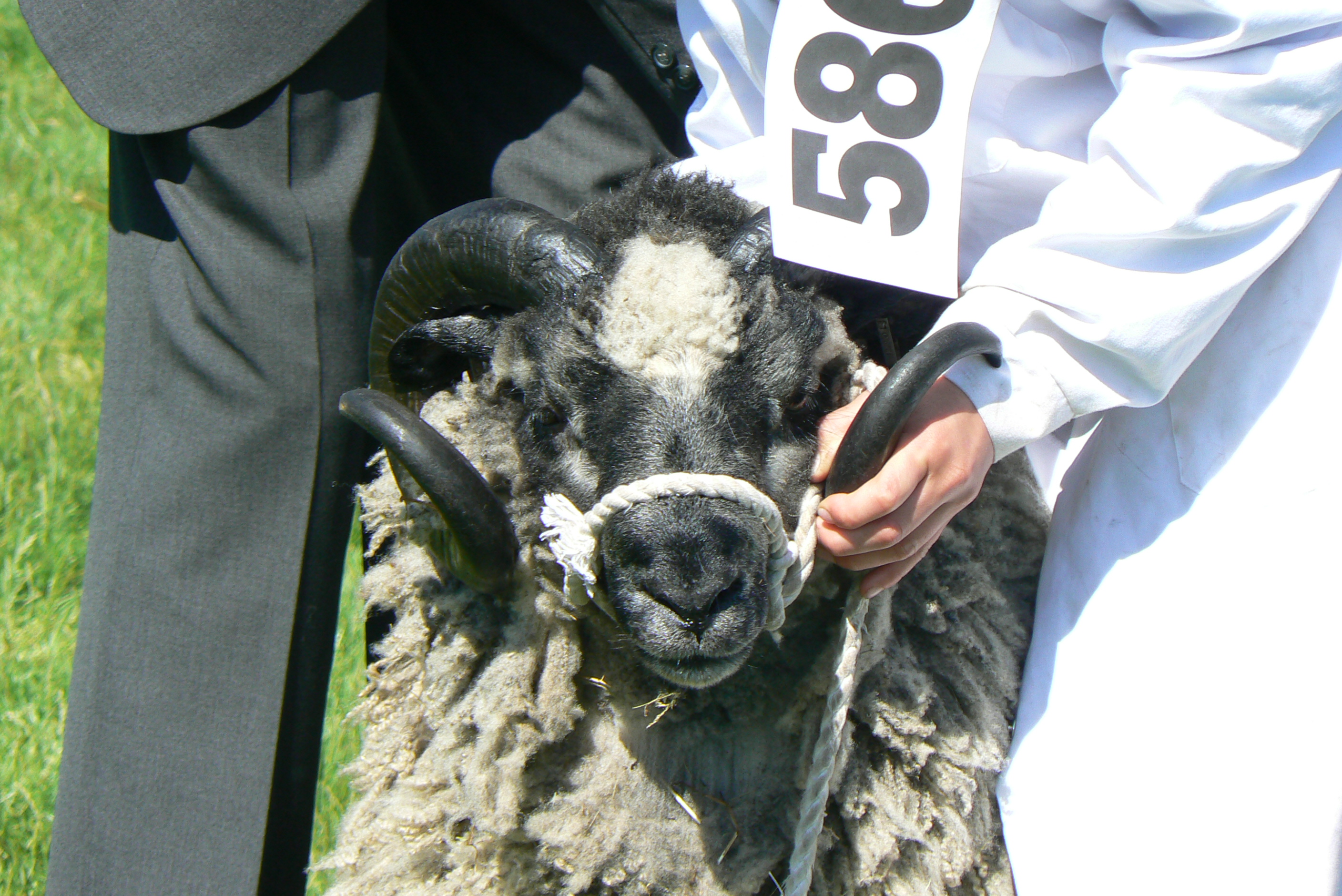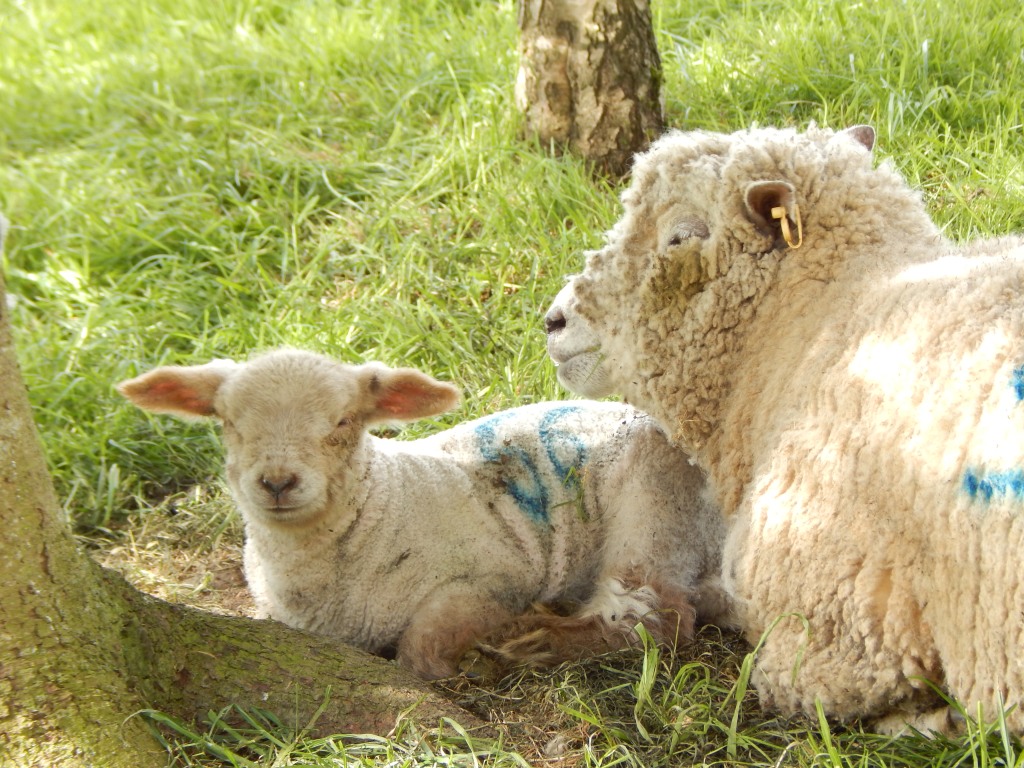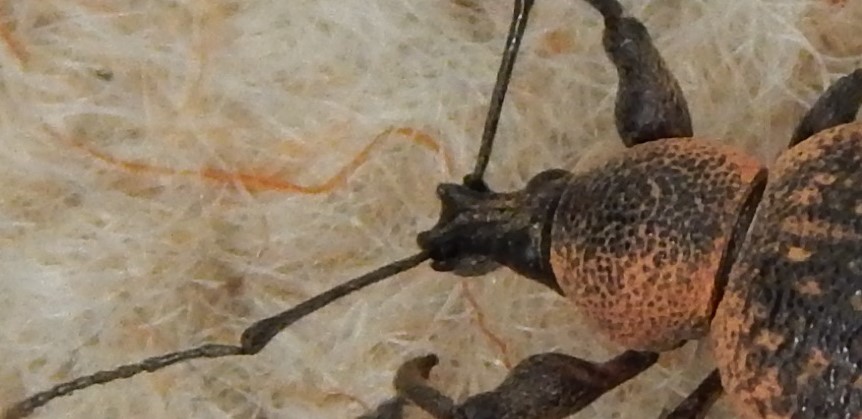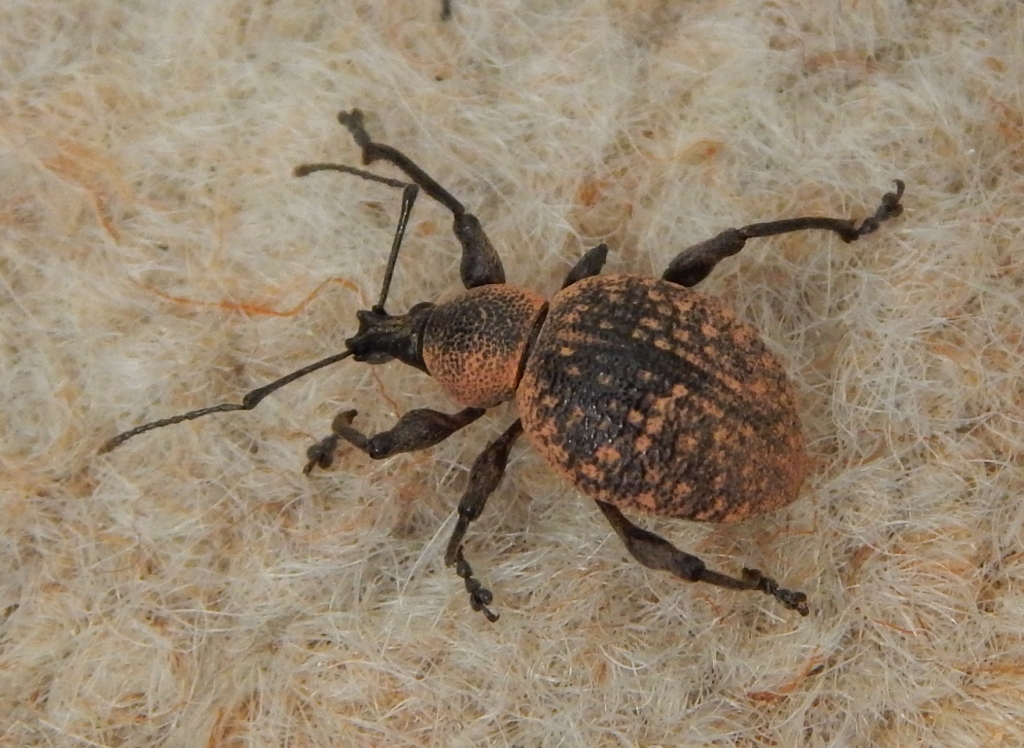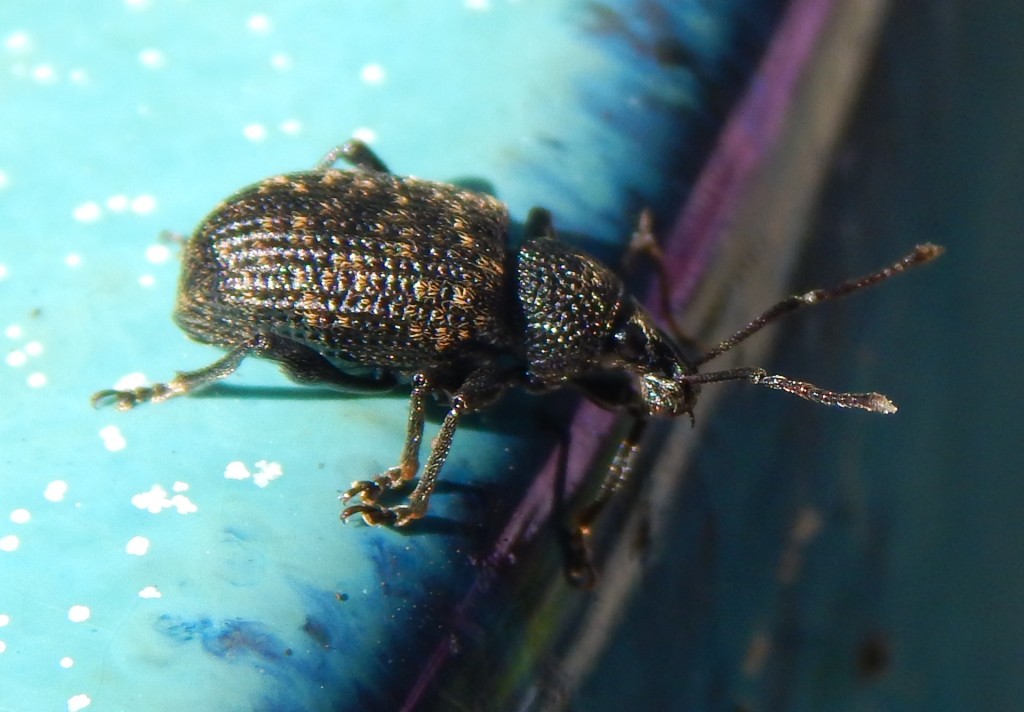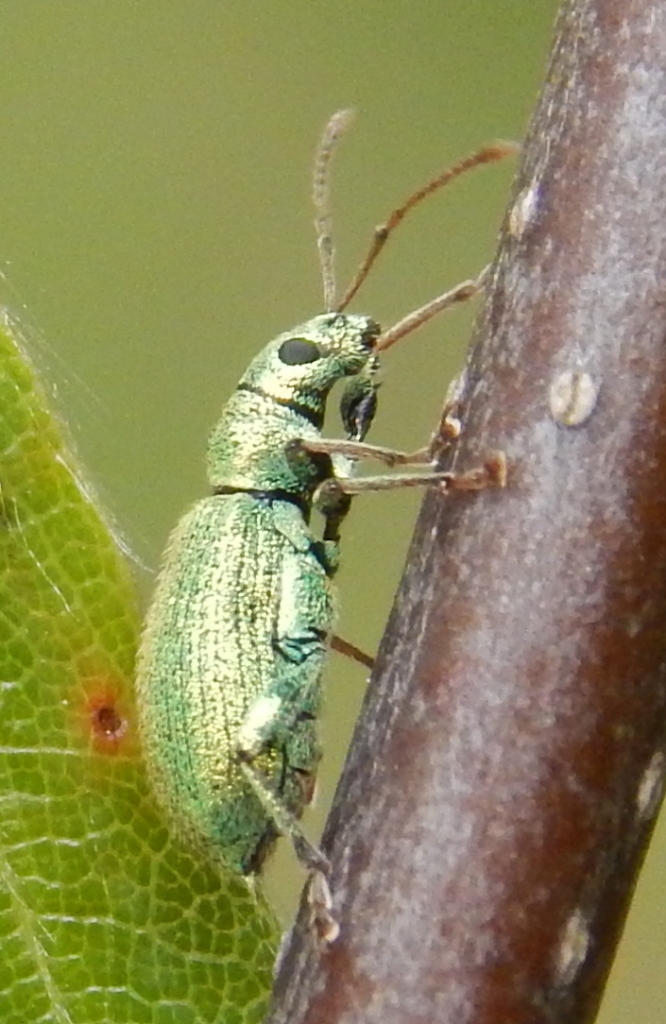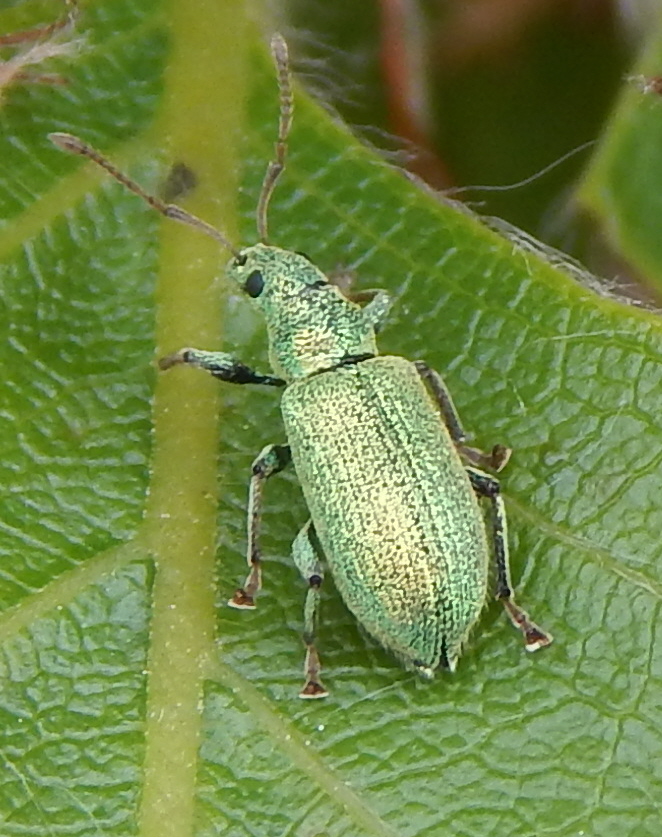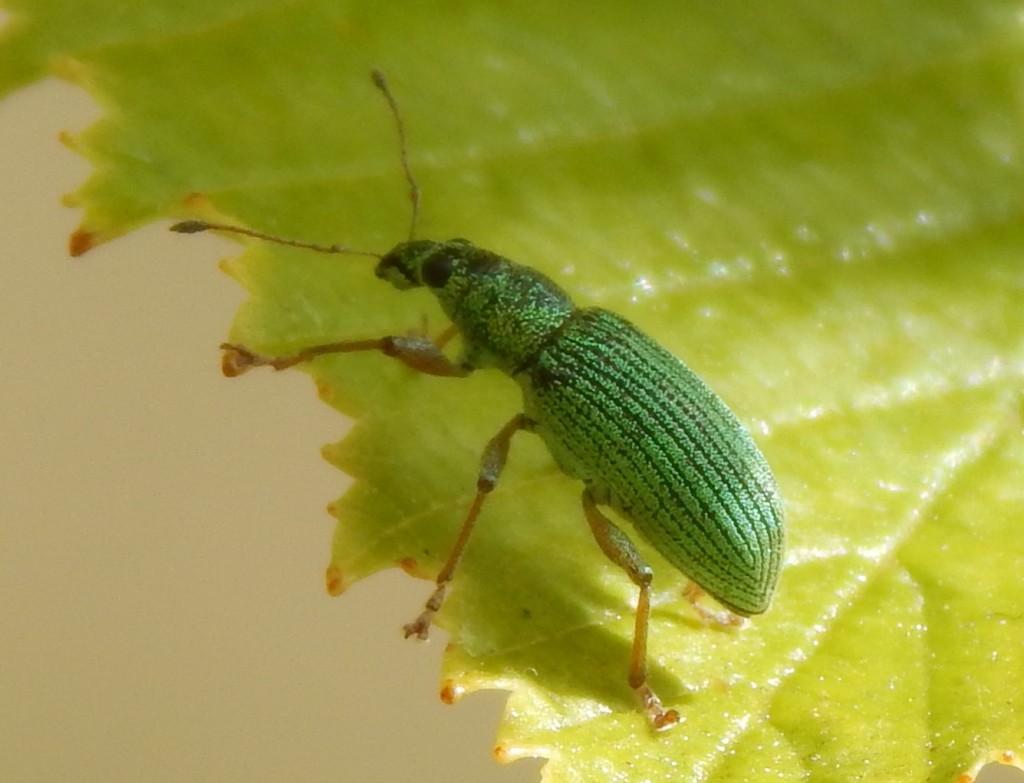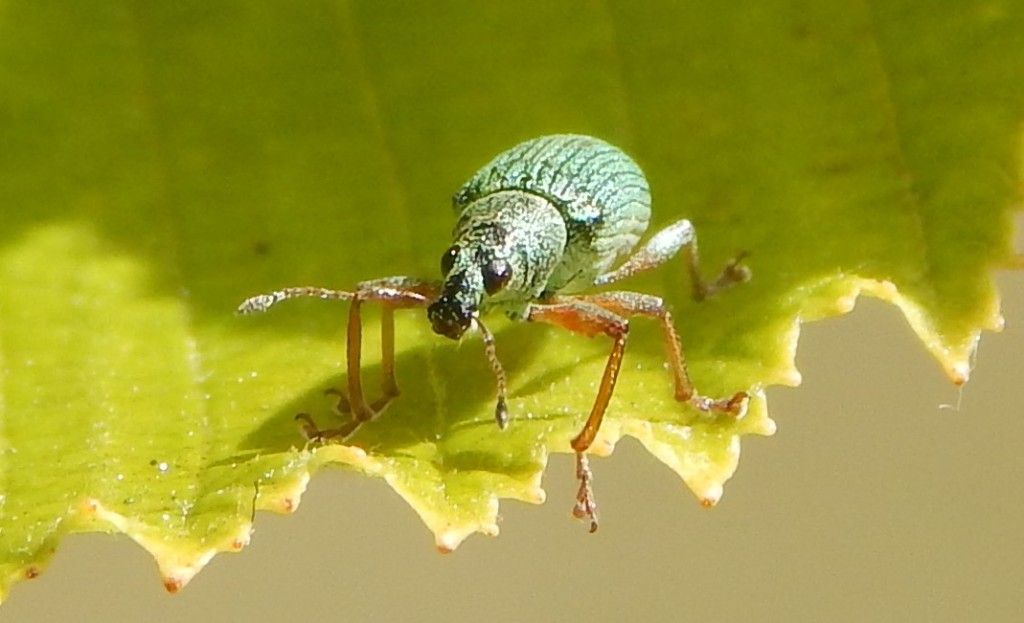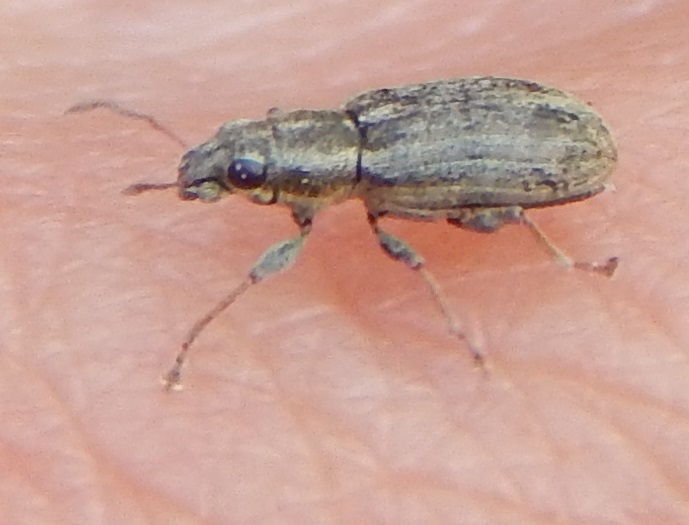
[253] Pavo cristatus, Peacock
Introduction
Pavo cristatus is a bird with a spectacular tail that is generally known as a Peacock but its official name is the Indian Peafowl or Common Peafowl or Blue Peafowl.
It should not be confused with [009] Aglais io and Papilio polyctor, two unrelated species of butterfly, both called peacocks (and a few other species of butterfly.)
Two closely related species, Pavo muticus and Afropavo congensis, are also called Peafowl.
Taxonomy
Kingdom – Animals
Phylum – Chordates
Class – Aves (Birds)
Order – Galliformes
Family – Phasianidae (Pheasants)
Genus – Pavo
Scientific Name – Pavo cristatus
Name
We run into problems with general names for common animals like [054] Cattle and chickens (domesticated Red Junglefowl.) To be precise, a male bird is a Peacock and a female is a Peahen, just as any male and female birds are cocks and hens.
This bird has been called a peacock since about 1300. Pekok, peacocke, pocok, pyckock and many other spellings became standardized as peacock in the late Seventeenth Century. I don’t think it has anything to do with peas.
Pavo is its name in Latin and cristatus, also Latin, means crested.
Description
The Peacock is actually a pheasant, or at least it is in the Pheasant family Phasianidae.
It is easy to think of a Peacock as a bird with a spectacular tail but everything else about its appearance is also spectacular. Its thorax and neck are a vivid iridescent shade of bright blue, which may be called peacock blue; the head is a pattern of shades of blue with white flashes; and it has a crest topped with blue and black.
They have a very long, impressive array of colourful tail feathers.


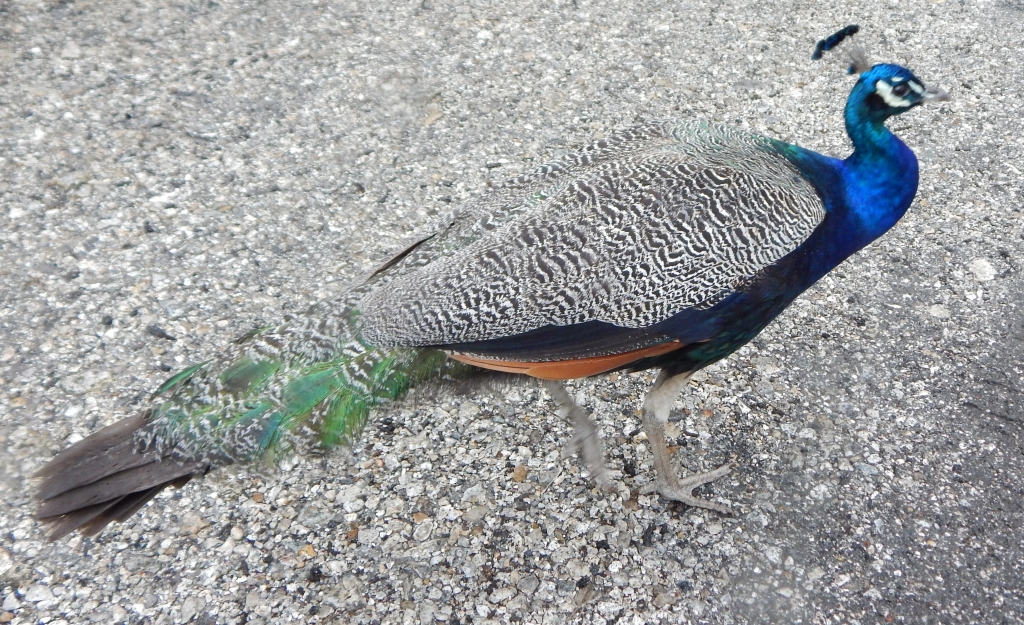
The tail feathers do not stop the birds from flying over short distances.
The tail can be display in a large fan-shape and is used in courtship rituals and as a display of power. It gives the appearance of many eyes. (The display is actually the tail coverts, feathers which normally cover the tail. The true tail feathers are much smaller and are hidden below or behind.)

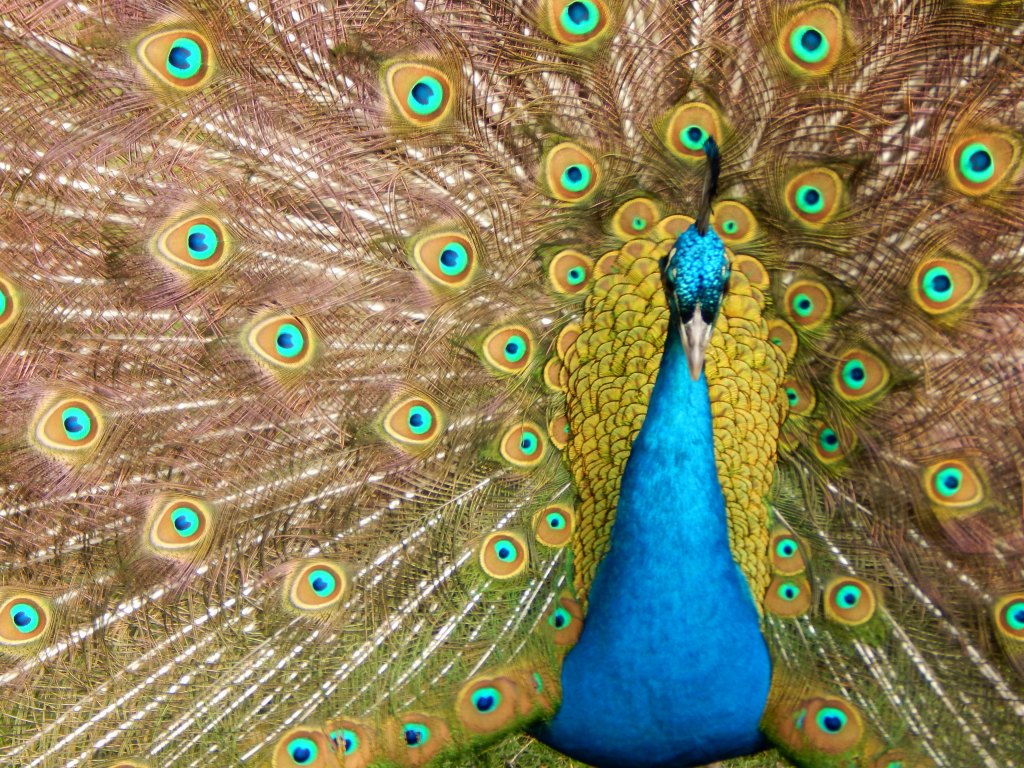
The female Peahen is smaller with duller colours of green and brown and a less impressive tail. She may display her tail to ward off other peahens or to warn her offspring of danger.

They are omnivorous and will eat mostly plants, flower petals, seed heads, also insects and arthropods, reptiles and amphibians. Domesticated birds can eat cereal grains, cheese, meat and vegetable like greens, carrots and peas.
Habitat and use
The Indian Peafowl is native to India and Sri Lanka but has been introduced in many other countries in the World. In their natural habitat they live in forests, nest on the ground and roost in trees.
In the UK it is often found as an ornamental bird, generally in captivity in parks and gardens and country houses. You may see them in wild or semi-wild situations and there are several on Brownsea Island.
Mythology and Religion
In Hinduism the Peacock is associated with Kartikeya, the God of War; Kaumari, the Warrior Goddess; the demon king Surapadman and others.
It appears in the Burmese and Sinhalese zodiacal signs.
One Ancient Greek myth concerns Argus, the hundred-eyed servant of Hera, who was sent to guard Io, who had been turned into a cow. Zeus sent Hermes to kill Argus but Hera preserved his hundred eyes in the peacock’s tail. (This, of course, is why the Peacock Butterfly is called Aglais io.)
Chaucer, in the early Fourteenth Century, referred an ostentatious person as ‘proud as a pekok,’ and this analogy is still used.
Other Notes
Once you have heard it, the call of a Peafowl is easily recognisable. It is a long loud single note – a sort of slurred diphthong.
You can often spot the sound in the background in period dramas or any film or television with a location on a large country estate.
See also
[256] The (Common) Pheasant is a close relative coming soon.


